Michelle Nelson-Schmidt's Blog, page 39
November 17, 2024
Beyond the Alamo: San Antonio’s Most Haunted Places Revealed
When you're exploring San Antonio's haunted sites, the Alamo is just the beginning. Head to the Spanish Governors Palace for ghostly apparitions and eerie cold spots. The San Fernando Cathedral, rich in history, often reveals shadowy figures and disembodied voices. In the King William District, you'll find ghostly legends surrounding historic mansions and the infamous Ghost Tracks. Don't forget the haunted hotels like the Emily Morgan, filled with spine-chilling stories. Each location offers a glimpse into the city's past, making your exploration a thrilling adventure. There's much more to uncover about these haunting tales waiting for you.
Key TakeawaysThe Spanish Governors Palace is renowned for ghostly apparitions and unexplained noises, making it a must-visit haunted location.San Fernando Cathedral, one of the oldest cathedrals in the U.S., features reports of shadowy figures and disembodied voices.The King William District boasts numerous ghost sightings tied to its rich history, including landmarks like the eerie Ghost Tracks.The Emily Morgan Hotel is famous for mysterious door openings and sightings of a woman in white, enhancing its haunted reputation.Urban legends like La Llorona and the Ghost Tracks enrich San Antonio's haunted narrative, captivating visitors beyond the Alamo.The Haunted AlamoAt the heart of San Antonio lies the Alamo, a site steeped in history and haunted tales. Originally known as Mission San Antonio de Valero, this historic landmark draws over 2.5 million visitors each year, many seeking the thrill of its paranormal activity.
Following the tragic 1836 Battle of the Alamo, where legendary defenders like Travis, Crockett, and Bowie died, countless reports of ghostly soldiers and disembodied voices have surfaced.
As you wander the grounds, keep an eye out for the Little Boy of the Alamo, a spectral figure often spotted peering from an upstairs window. His presence adds an eerie charm to the site, enchanting the imaginations of those brave enough to explore.
Visitors frequently experience emotional disturbances in the chapel area, especially during February and March, when the anniversary of the battle approaches.
If you're keen to plunge into the Alamo's haunted history, consider joining one of the many ghost tours available. These tours blend fascinating historical narratives with chilling ghost stories, ensuring you leave with a deeper understanding of this enigmatic site that stands as a symbol of both bravery and the supernatural.
Spanish Governors Palace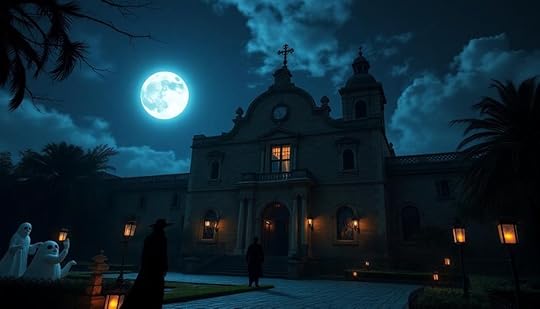
The Spanish Governor's Palace stands as a stunning tribute to San Antonio's colonial past, but beneath its architectural beauty lies a reputation for hauntings that intrigue many visitors. Recognized as one of the most haunted buildings in the area, it draws those curious about both history and the supernatural.
As a Texas historic landmark, the palace showcases rich historical significance while inviting people to explore its eerie side. Visitors often report experiences that enhance its mystique:
Ghostly apparitions, including shadows and figures from the pastUnexplained noises, like children playing or whispers in empty roomsCold spots that send chills down your spineOnce a military outpost with a violent history, the Spanish Governor's Palace has become a hotspot for ghost tours, allowing you to plunge into its haunting tales.
Those brave enough to explore may find themselves captivated by the paranormal activity that lingers in the air. Whether you're a skeptic or a believer, the eerie encounters reported here are sure to add a spine-tingling thrill to your visit.
Don't miss this blend of history and haunting during your San Antonio adventure!
San Fernando Cathedral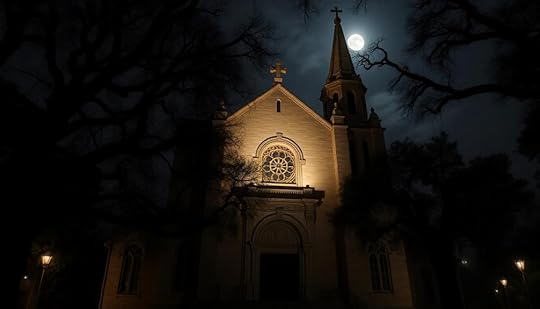
When you step into San Fernando Cathedral, you can't help but admire its stunning Gothic architecture and feel the weight of its historical significance.
Many visitors report ghostly encounters, claiming to see shadowy figures and hear disembodied voices during their visit.
This blend of rich history and eerie lore makes the cathedral a must-see for anyone intrigued by the paranormal.
Historical Significance and ArchitectureNestled in the heart of San Antonio, San Fernando Cathedral stands as a tribute to the city's rich history and architectural beauty. Established in 1731, it's one of the oldest cathedrals in the United States and serves as a crucial landmark in Texas history. The architecture showcases a unique blend of Gothic and Romanesque styles, embodying the cultural influences of the Spanish colonial period.
Key aspects of San Fernando Cathedral include:
Its historic location on the site of Mission San Antonio de Padua, highlighting early Catholic mission efforts.The final resting place for heroes of the Battle of the Alamo, enhancing its significance in Texas history.Stunning stained glass windows that depict biblical scenes and local history, enchanting visitors and worshippers alike.As you explore the cathedral, you can't help but feel its profound connection to San Antonio's past. The intricate details of its architecture and the stories behind its walls make it a must-see for anyone interested in the rich tapestry of Texas history.
San Fernando Cathedral isn't just a place of worship; it's a living monument to the enduring spirit of the community.
Reported Ghostly EncountersConstructed in 1731, San Fernando Cathedral isn't just a masterpiece of architecture; it's also a site where the past seems to linger in the shadows.
As you step inside, the air thickens with a spiritual atmosphere that many visitors describe as both eerie and enchanting. You may find yourself drawn to the whispers of history that echo through its hallowed halls.
Reports of ghostly figures and disembodied voices have become a part of the cathedral's lore. During evening services, people often claim to see shadowy figures flitting between the pews or hear faint murmurs that seem to rise from the very walls.
This historic site, steeped in the stories of early settlers, adds a layer of intrigue that's hard to ignore.
Ghost tours frequently highlight San Fernando Cathedral, showcasing its reputation as one of the most haunted places in San Antonio.
The unique combination of its architectural beauty and the rich tapestry of paranormal activity creates an unforgettable experience.
Whether you're a believer or a skeptic, the encounters reported here invite you to explore the mysteries that continue to haunt this remarkable landmark.
King William District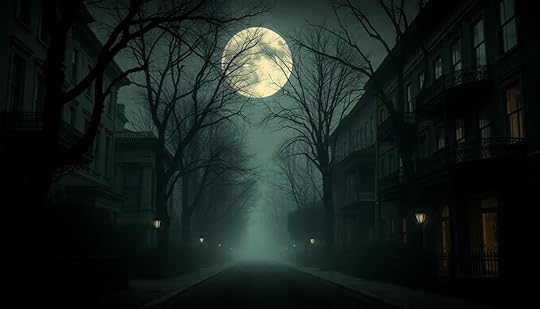
The King William District is steeped in history, and its haunted reputation only adds to its allure.
As you explore its Victorian homes, you'll hear tales of ghostly encounters that reflect the area's rich cultural background.
These legends not only captivate the imagination but also hint at the spirits that may still linger among the living.
Historical Significance of HauntingsExploring the King William District reveals a rich tapestry of history intertwined with haunting tales that captivate both locals and visitors. Known for its stunning historic mansions, this area is recognized as one of San Antonio's most haunted places.
You'll find that the ghosts of former residents linger in the shadows, with many homes like the Edward Steves Homestead reporting unexplained noises and mysterious sightings.
The historical significance of these hauntings is deep, often reflecting the struggles and tragedies faced by early inhabitants.
Consider these points:
The ghostly legends enhance the cultural significance of the district, connecting you to its past.Landmarks like the Ghost Tracks add an eerie charm, where tales of ghostly children pushing stalled vehicles create a chilling atmosphere.Ghost tours walk you through the district's architectural beauty while sharing spine-tingling stories that intertwine history and the supernatural.As you explore, it becomes clear that the King William District isn't just about its haunted hotels and chilling narratives; it's a living history, inviting you to uncover the stories that shaped San Antonio.
Notable Ghostly EncountersWithin the enchanting streets of the King William District, you'll find stories of notable ghostly encounters that intrigue both skeptics and believers. This area, celebrated for its historic architecture, is regarded as one of the most haunted places in San Antonio.
Residents and visitors alike have reported numerous ghost sightings, often tied to the district's rich history. Many of these hauntings are attributed to spirits believed to be trapped by the water barriers along the San Antonio River.
As you stroll through the district, prepare for eerie feelings that suggest you mightn't be alone. Witnesses have shared tales of apparitions of former residents and strange noises echoing through the streets at night, adding to the area's haunted reputation.
Local legends and folklore further enrich these ghost stories, with accounts of ghostly figures seen wandering the historic homes and parks.
Ghost tours frequently spotlight the King William District, making it a focal point for paranormal activity. Whether you're a believer or a skeptic, the combination of history and hauntings here is sure to captivate your imagination.
Cultural Influences on LegendsGhost stories in the King William District reveal a tapestry of cultural influences that shape its legends and lore. This historic area, rich in Victorian architecture, is steeped in urban legends that intertwine with its tragic history. Locals often share tales that echo the cultural heritage of diverse immigrant groups, creating a haunted reputation that lures visitors.
The San Antonio River, seen as a spiritual barrier, allegedly traps spirits from the past, heightening the area's mysterious aura.Many ghostly encounters relate to heart-wrenching stories of unrequited love and family tragedies, making the haunting experiences all the more poignant.Folklore frequently features prominent figures from the district's history, whose spirits are said to linger in the homes they once inhabited.As you explore the King William District on ghost tours, you'll uncover how these cultural influences blend with the area's eerie atmosphere, inviting you to connect with the spirits from the past.
Each story contributes to a vibrant narrative that keeps the legends alive, reminding you that history and hauntings often go hand in hand.
Haunted Hotels and Theatres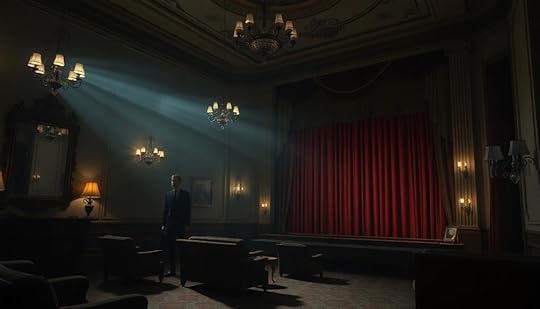
San Antonio's haunted hotels and theatres offer a spine-tingling glimpse into the city's rich history and supernatural lore. If you're brave enough to explore, you might encounter the spirits that linger in these historic sites.
Here's a quick look at some of the most haunted places in San Antonio:
LocationHaunting DetailsEmily Morgan HotelKnown for supernatural activity; doors open and close mysteriously, sightings of a woman in white.Saint AnthonyLuxury hotel with ghostly encounters; strange noises and a woman in white frequently reported.Crockett HotelOnce a medical facility; guests hear unexplained sounds and encounter a woman in white and a Confederate soldier.Esquire TavernAlong the River Walk; reports of a woman in white and a cowboy hat man, with cold breezes felt by visitors.Majestic TheatreHosts the phantom of a former performer; sightings enhance its cultural significance and haunted reputation.These locations, filled with history, provide thrilling experiences for anyone interested in the paranormal. So, are you ready to uncover the secrets hidden within?
Urban Legends of San Antonio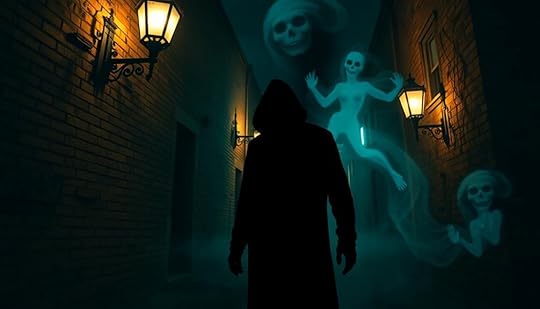
Legends and lore weave through the streets of San Antonio, adding another layer to its haunted history. These urban legends enchant locals and visitors alike, conjuring images of spirits and sorrow. You might hear tales about:
La Llorona: The weeping woman doomed to wander the rivers, searching for her drowned children, reflecting deep maternal grief.Ghost Tracks: The infamous railroad tracks where ghostly children allegedly push stalled cars over, linked to a tragic school bus crash in the early 20th century.Terrell Castle: Known for its eerie stories involving the tragic suicide of its original owner, Edwin Holland Terrell, and reported sightings of children's laughter and moving objects.In the picturesque King William District, rumors of hauntings predate the area's development, suggesting a rich tapestry of history intertwined with the ghosts of the Alamo.
Each urban legend adds to the allure of San Antonio's haunted places, making it a fascinating destination for those brave enough to explore its spectral stories.
Whether you're searching for La Llorona or hoping to experience the Ghost Tracks firsthand, the city's haunted history is alive and waiting for you.
Cultural Influences on Hauntings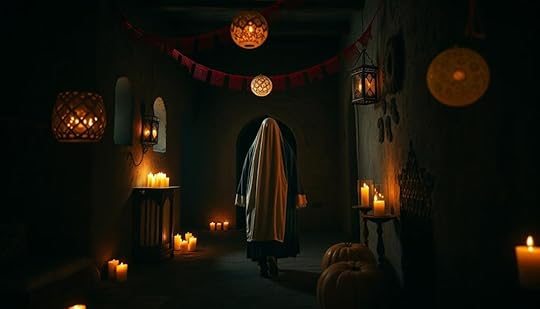
While exploring the haunted places of San Antonio, you'll discover that the city's diverse cultural history greatly shapes its ghost stories and folklore. From the eerie halls of the Menger Hotel to the somber echoes of the Spanish Governor's Palace, every haunted location tells a tale intertwined with cultural heritage.
The legend of La Llorona, for instance, speaks to deep maternal grief and loss, reflecting societal fears within the Hispanic community.
As you walk through San Antonio's haunted locations, you'll encounter narratives that echo the struggles of the past. Ritual practices, like those associated with Santería, influence the spiritual beliefs that permeate these ghostly tales, allowing for communication with the dead. Each ghost you hear about carries a piece of the city's history, bridging the gap between life and the afterlife.
Ghost tours not only entertain but also preserve this rich cultural heritage, providing insights into the events and legends that shape San Antonio's haunted reputation.
Tragic Historical Events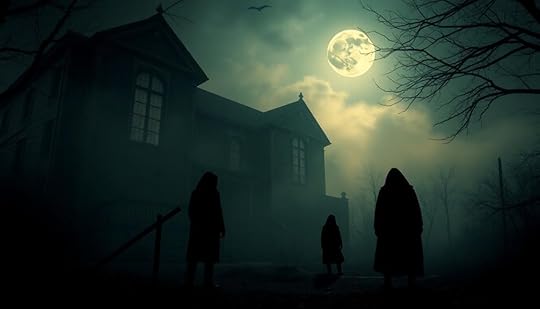
The rich tapestry of San Antonio's haunted history is deeply intertwined with its tragic historical events. As you explore the city, you'll encounter haunted places that bear the weight of sorrowful legacies. The Battle of the Alamo in 1836, where over 180 Texans lost their lives, still echoes through ghostly apparitions that seem to guard the site.
Consider these chilling reminders of San Antonio's past:
The Menger Hotel, once a hospital during the Civil War, where guests often report sightings of a murdered chambermaid.The San Antonio State Hospital, with its dark history of abuse and mysterious deaths, allegedly houses the spirits of former patients warning others of impending danger.The Ghost Tracks at Villamain and Shane Roads, where local lore suggests ghostly children assist stalled vehicles after a tragic school bus crash.These tragic historical events contribute to the eerie atmosphere, making ghost tours a popular way to witness the lingering spirits of San Antonio's past.
As you walk these haunted grounds, you'll feel the weight of history, reminding you that the past is never truly gone.
Ghostly Encounters and Sightings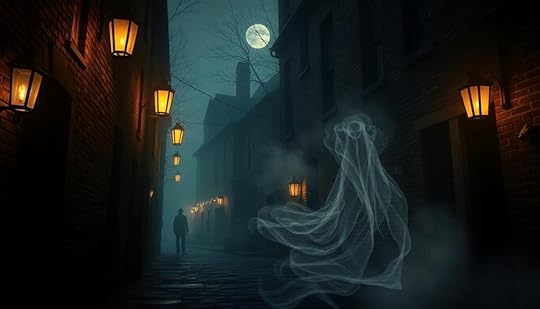
As you wander through San Antonio, prepare to encounter a world where the past collides with the present, and ghostly sightings abound. The city is rich with haunted places, each with its own chilling tales.
One of the most notorious locations is the Emily Morgan Hotel, where guests often report ghostly encounters with a woman in a white dress and disembodied voices echoing through the halls.
Don't miss the Menger Hotel, known for its staggering 45 ghost sightings, including those of a murdered chambermaid and playful ghostly children. Visitors frequently share their eerie experiences, adding to the hotel's haunted reputation.
For a truly spine-tingling experience, join one of the ghost tours in San Antonio, where you'll hear stories of the Alamo's spectral soldiers and the unsettling encounters at the Saint Anthony Hotel, where strange occurrences, like objects moving on their own, are commonplace.
Lastly, at the Ghost Tracks on Villamain and Shane Roads, many feel an unusual push from ghostly children, a haunting reminder of a tragic past.
In San Antonio, the spirits of history are alive, waiting for you to discover their stories.
Frequently Asked QuestionsWhat Is the Most Haunted Place in San Antonio?The most haunted place in San Antonio is the Alamo. You'll hear disembodied voices and feel eerie chills, especially in the chapel. If you visit, be prepared for a hauntingly memorable experience!
What Is the Most Haunted Place in the World?Haunted like a whisper from the past, the Tower of London stands as the world's most haunted site. With spirits of Anne Boleyn roaming its halls, you can't help but feel history's chilling presence there.
Is the Alamo in San Antonio Haunted?Yes, the Alamo's haunted. You'll hear ghostly whispers, feel sudden chills, and might even spot apparitions of soldiers. Many visitors claim to experience emotional disturbances, especially in the chapel where the energy feels particularly intense.
What Room Is Haunted at the Gunter Hotel in San Antonio?At the Gunter Hotel, Room 636's known for its haunting. You might experience strange noises and cold presences, and some guests even report seeing a woman in a white dress. Are you brave enough to stay?
ConclusionAs you wander through San Antonio's shadowy streets, imagine each haunted site as a flickering lantern illuminating the past. Just like the ghostly figures that dance in the night, the stories of love, loss, and tragedy echo through time, weaving a tapestry of history rich with cultural threads. Embrace the whispers of the past, for they guide you to understand the city's spirit, reminding you that every haunting holds a lesson waiting to be discovered.
November 16, 2024
What if Monsters Celebrate Unique Holidays of Their Own
Monsters celebrate unique holidays that reflect their rich cultures and traditions. You might find creatures engaging in vibrant festivals, like the Feast of the Beasts, where strength and skill are showcased. Nighttime gatherings feature communal feasts and storytelling, emphasizing unity and cultural identity. Parades highlight their legendary traits, bringing together various species to share traditions. Each celebration is infused with rituals that honor nature and community, fostering a sense of belonging. These festivities are as meaningful as human holidays, and they reveal fascinating insights into monster societies and their values. Discover more about these enchanting celebrations!
Key TakeawaysMonsters celebrate unique holidays like the Feast of the Beasts, fostering community bonds through shared experiences and traditions.Rituals often include vibrant feasts, costume celebrations, and nighttime gatherings that reflect cultural identity and creativity.Festivals showcase traditional food, storytelling, and games that promote teamwork and camaraderie among diverse species.Celebratory parades feature elaborate floats and performances, narrating community stories and enhancing cultural pride.Monster holidays align with nature, honoring seasonal changes and fostering a connection to the environment and its spirits.Unique Holidays Across Monster Cultures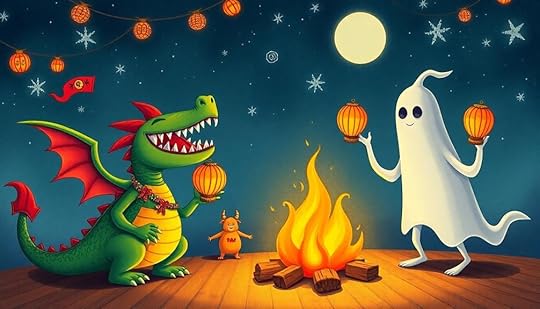
Across various monster cultures, unique holidays reflect their distinct values and traditions. One of the most celebrated is the "Feast of the Beasts," where monsters showcase their strength through competitions, mirroring the spirit of traditional harvest festivals.
You'd see creatures of all shapes and sizes vying for glory, creating bonds as they cheer for one another.
For nocturnal beings, "Moonshadow Night" is a cherished occasion. Under the full moon's glow, they gather to share thrilling tales of their adventures and honor their ancestors, strengthening their community ties.
Predatory monsters mark the "Day of the Hunt," a significant celebration that commemorates their skills and the balance between hunter and prey.
This holiday emphasizes respect for nature's cycles while showcasing their prowess.
Then there's the "Mirth of the Minotaurs," where they engage in elaborate labyrinth games.
These challenges test their wits and strength, all while fostering camaraderie among participants.
Rituals and Traditions of Monsters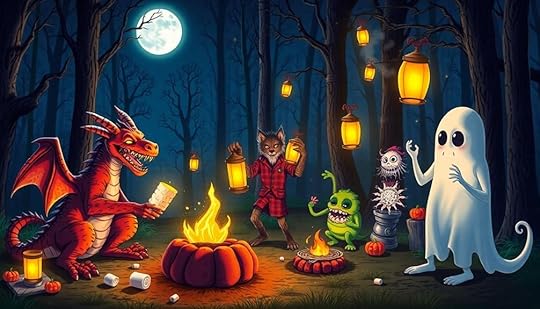
When you step into the world of monsters, you'll discover their vibrant rituals and traditions that bring them together.
From festive feasts and costume celebrations to nighttime gatherings, these customs strengthen their bonds and honor their unique identities.
Each event showcases a blend of heritage and community that you won't want to miss.
Festive Feasts and OfferingsMonsters celebrate their unique holidays through vibrant feasts and meaningful offerings that reflect their cultures and traditions.
During the "Feast of Shadows," they gather under the night sky, sharing meals crafted from the spoils of their hunts. You can almost hear a bump in the night as they honor their ancestors by offering the best catches, ensuring their legacy lives on.
In addition to their culinary delights, many monsters enjoy wearing cozy attire, such as best knitting patterns for olive green sweaters, which adds a festive touch to their gatherings.
Lycanthropes partake in a "Howl of Gratitude" under the full moon, where they come together to give thanks for their transformations and the prey they've acquired. This ritual strengthens their bond and appreciation for the wildness within them.
Meanwhile, goblins host a "Glimmering Gathering," adorning their lairs with shiny trinkets and competing for the most impressive hoard. Their cunning and craftsmanship shine as brightly as the treasures they hold dear.
Dragons observe "The Great Flight," soaring through the skies to showcase their power and majesty before indulging in a grand feast of roasted beasts, shared amongst their kin.
Unique Costume CelebrationsUnique holidays aren't just about food and offerings; they also showcase the creativity and cultural richness of monsters through vibrant costumes and rituals.
Take, for example, werewolves celebrating the full moon. They don elaborate outfits that highlight their wolf-like traits, complete with fur and claws, making the night truly go bump with excitement.
Vampires host grand masquerade balls on All Hallows' Eve, where they wear intricate costumes to hide their identities while reveling in gothic splendor.
Goblins, on the other hand, embrace humor at the "Feast of Fools," dressing in mismatched, colorful attire and performing skits that poke fun at their more serious counterparts.
Dragons participate in "Scale Day," dazzling everyone with their vibrant costumes that showcase their magnificent scales. They engage in contests to determine who's the most spectacular appearance.
Finally, ghosts observe "Wraith's Veil," wearing ethereal garments to honor their past lives, reenacting scenes from their mortal existence.
These unique costume celebrations not only enable JavaScript-inspired creativity but also reflect how monsters, much like how we celebrate holidays like Santa Claus, express their identities within their rich cultural tapestry.
Nighttime Gatherings and RitualsAs the moon rises high in the night sky, various creatures come together for their cherished nighttime gatherings, celebrating their rich traditions and bonds. Under the full moon, monsters share food, recounting conquests and adventures around a crackling fire. These gatherings often feature communal dances that mimic hunting behaviors, fostering friendly competition and showcasing skills.
The rituals vary, but you'll notice some common themes:
RitualDescriptionHarvest FestivalA celebration of shared food and stories.Howl of the AncestorsA rite of passage for werewolves, honoring lineage.Crafting DecorationsMaking intricate items from bones and feathers.Feast of ShadowsDishes prepared with foraged ingredients.Seasonal ShiftMarking the change with unity and respect.As the night deepens, these traditions strengthen community ties. By embracing their unique customs, monsters guarantee that their heritage lives on, creating a lasting bond with nature and each other. In these nighttime rituals, they find joy, unity, and a sense of belonging, celebrating both their individuality and shared experiences.
Festive Foods and Feasts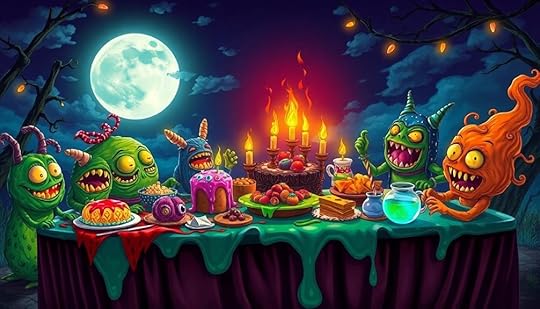
In the depths of their mystical domains, festive foods and feasts come alive as monsters celebrate their unique holidays. Each species showcases traditional dishes crafted from native ingredients that reflect their cultural heritage. For swamp-dwelling creatures, roasted swamp critters might be the star of the feast, while forest-dwelling beings enjoy savory mushroom risotto, often enhanced with fermented vegetable plates for added flavor and gut health benefits.
Signature festive foods also play a key role—oozes savor gelatinous cubes, and vampires relish blood pudding. Communal dishes encourage bonding, with a giant cauldron of stew demanding teamwork to prepare and serve.
Sweet treats symbolize the holiday themes, like spiderweb cakes for arachnids or bone-shaped cookies for skeletal beings, adding a whimsical touch to the celebrations. To elevate the festive atmosphere, monsters imbibe unique beverages. Trolls might sip on fermented berry brews, while magical creatures enjoy enchanted elixirs, making every bite and sip a part of the celebration.
These festive foods and feasts not only nourish but also strengthen the bonds among monsters, weaving a tapestry of shared experiences that honor their distinct traditions. Each meal is a celebration of their identity, creating memories that last far beyond the holidays.
Celebratory Parades and Gatherings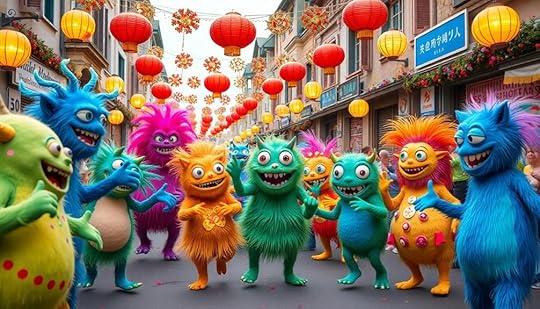
When you think about monsters' holidays, vibrant parades and gatherings come to mind, full of life and color.
These processions showcase their unique cultures, featuring floats that reflect their legendary traits and rituals of unity that bring everyone together.
Just like the rich cultural heritage represented in Indonesian decor masks, these celebrations embody a blend of artistry and tradition.
You'll find a mix of competitions, storytelling, and shared meals that not only celebrate their heritage but also foster friendships across species.
Festive Monster ProcessionsFestive monster processions bring together a dazzling array of creativity and culture, showcasing the unique traits of various monster species. Imagine elaborate floats adorned with vibrant scales or majestic wings, each representing a different monster's heritage. These floats don't just celebrate; they tell stories of cultural identity, enchanting all who witness them.
As you stroll through the parade, traditional music fills the air, accompanied by lively dances that reflect each community's customs and folklore. You can't help but feel the infectious energy that envelops the crowd.
Costume competitions add an extra layer of excitement, as monsters showcase their creativity. You might even spot a prize-winning costume that perfectly captures the essence of a rare species.
Local communities get involved too, crafting themed decorations that transform the streets into immersive environments mirroring the monsters' habitats. This collective effort fosters a sense of unity and pride among participants.
Rituals of Unity CelebrationsCelebrating the bonds between different monster species, Rituals of Unity bring together vibrant parades and gatherings that highlight cultural heritage and shared values.
You'd find these parades bursting with elaborate floats and costumes, each reflecting the unique traditions of various clans. As you walk among the colorful displays, you'll feel the sense of community grow stronger.
These events often feature traditional games and competitions, where teamwork and camaraderie shine. You'll have a chance to cheer on friends and neighbors as they showcase their impressive skills. The air fills with celebratory music and dance, infused with the distinct sounds of each monster group, igniting a lively atmosphere that invites everyone to participate.
Food plays an essential role too, with each monster bringing their favorite dishes to share. This culinary exchange not only promotes unity but also deepens the connections within the community.
As the festivities unfold, storytelling segments allow elder monsters to narrate tales of their ancestors, instilling pride and continuity. You'll find yourself captivated by these stories, learning about the rich history and traditions that bind all monster species together in joyous celebration.
Storytelling and Myth Sharing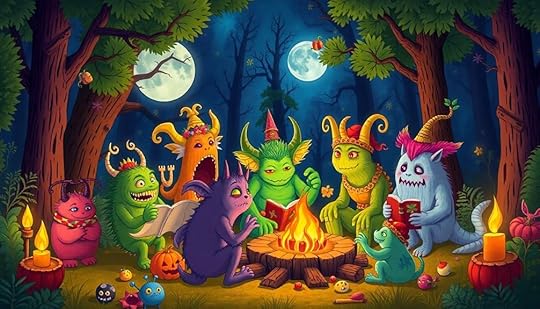
As monsters gather for their unique holidays, they immerse themselves in the rich tradition of storytelling and myth sharing, which strengthens their cultural bonds. These holidays reflect their values and experiences, much like human festivals rooted in folklore.
You'll see them recounting tales of heroic feats and significant events, reinforcing moral lessons that shape their society's norms. During these celebrations, storytelling traditions flourish, serving as a vehicle to pass down history and legends from one generation to the next.
You might witness performances or reenactments that highlight their unique lore, making the stories come alive. There's often a competitive spirit, with storytelling competitions igniting excitement and camaraderie among participants.
This exchange of myths isn't just about entertainment; it's a crucial way to educate younger monsters about their heritage and shared beliefs. As they listen, the younger ones absorb the lessons embedded in these tales, fostering a strong sense of identity within the community.
Monster Costumes and Decorations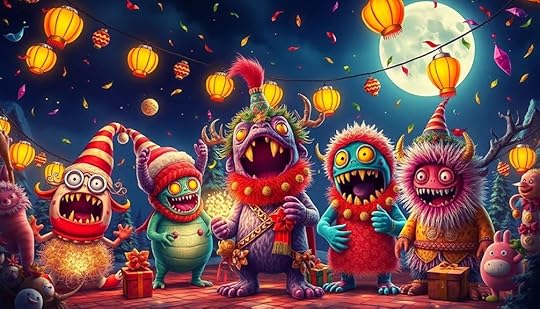
During monster holidays, you'll find an array of elaborate costumes that showcase each creature's unique traits. Monsters might don outfits adorned with shimmering scales or fluffy fur, incorporating natural elements like leaves and bones to connect with their environment.
These costumes not only reflect their individual characteristics but also highlight their bond with the earth.
The decorations for these festivities are equally enchanting. Imagine eerie lighting created by bioluminescent fungi and glowing crystals, setting an atmospheric tone that enhances the holiday spirit.
Handmade ornaments crafted from their natural habitats, like woven vines and carved stones, become prominent features in their celebrations.
Competitions often arise, where monsters showcase their creativity in costume contests, drawing inspiration from folklore and their own monstrous features.
Themed decorations based on legends or cultural stories add to the excitement, with banners depicting famous battles or mythological events that resonate within their communities.
These elements create a vibrant display, immersing everyone in the rich tapestry of monster heritage. Each costume and decoration tells a story, enriching the overall celebration and allowing monsters to express their identity and history.
Significance of Community in Celebrations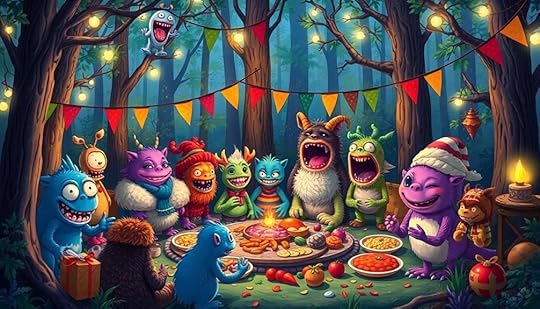
When you celebrate with your monster community, you're not just having fun; you're strengthening the bonds that tie you all together.
These shared experiences create a deeper understanding of each other's cultures and histories.
Shared Experiences and BondsCelebrating unique holidays allows monsters to come together, fostering a deep sense of belonging and identity within their communities. These celebrations often include communal rituals and gatherings, giving you a chance to share experiences, stories, and collective memories with others. This sharing enhances your sense of unity and reinforces the social bonds that are vital for cultural continuity.
Many monster holidays revolve around shared challenges or themes, like survival or transformation. When you engage in these activities, you connect with others through common struggles and triumphs, creating a powerful sense of camaraderie. Celebrating together promotes collaboration among different monster groups, leading to alliances that strengthen inter-community relationships, which can be significant during conflicts.
Participating in these communal celebrations uplifts your spirit and helps create a supportive environment. In a world where monsters often face societal pressures and discrimination, these unique holidays provide a safe space to express your identity and find solidarity with fellow monsters.
Cultural Exchange and UnderstandingUnique holidays offer monsters a vital platform for cultural exchange and understanding, allowing diverse groups to showcase their identities while fostering a sense of community. When you participate in these celebrations, you witness monsters expressing their unique cultural identities, which strengthens your sense of belonging.
Through shared feasts and storytelling, you not only enjoy the festivities but also build bonds with others, enhancing support networks and collective resilience. As you engage with different customs during these holidays, you begin to break down stereotypes, promoting social cohesion.
Collaborative celebrations that invite participation from neighboring communities create opportunities for dialogue and cooperation. You'll find that as monsters share their traditions, they learn from each other, developing empathy and mutual respect.
This exchange enriches the cultural landscape for everyone involved, fostering a more harmonious coexistence. By embracing these unique holidays, you contribute to a deeper understanding of the diverse experiences that shape monster communities and their identities.
Ultimately, these celebrations become a powerful tool for fostering unity and appreciation across different backgrounds, reminding you of the importance of community in building a brighter, more inclusive future.
Comparing Monster Holidays to Human Ones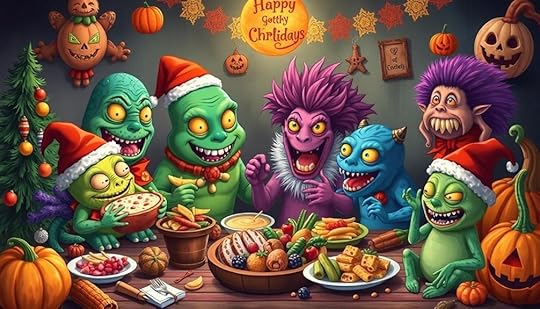
Monsters and humans share a fascinating contrast in their holiday celebrations, with each embodying distinct cultural values and themes. While human holidays often emphasize joy, togetherness, and goodwill, many monster holidays explore darker aspects of existence.
Take the Krampus, for instance; this creature serves as a reminder of the consequences of misbehavior during festive times. Similarly, the Yule Cat prowls the streets, ensuring that those without new clothes face dire consequences.
Monsters also engage in unique rituals that reflect their cultural identity. For example, the Mari Lwyd features communal gatherings where participants sing traditional songs to negotiate entry, showcasing their social structures and traditions.
Meanwhile, just as humans might volunteer during holidays, monsters participate in competitions like the Hrazhak sport from Eldeen, highlighting their values in a different context.
Ultimately, these celebrations, whether joyous or fearsome, reinforce community bonds and societal norms among monsters, paralleling human holidays that strengthen cultural heritage.
The Role of Nature in Celebrations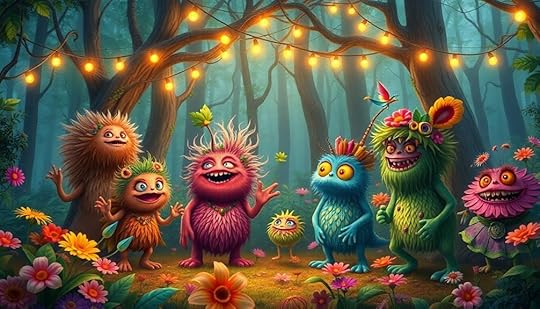
Nature plays an essential role in many monster celebrations, with festivities often tied to the changing seasons. These celebrations align with significant natural events, like solstices and equinoxes, emphasizing harvest and renewal. For instance, werewolves celebrate the full moon with rituals that enhance their powers, showcasing their connection to lunar cycles.
Monsters commonly gather to honor the spirits of the forest and the elements, fostering unity and respect for their environment. They also celebrate the blooming of flowers or the migration of animals, highlighting their reliance on nature for sustenance and survival. Many holidays include offerings to nature spirits or deities, reflecting a desire to maintain harmony with their surroundings.
Here's a quick overview of how nature influences monster holidays:
Celebration TypeKey ElementSeasonal FestivalsSolstices and EquinoxesLunar CelebrationsFull Moon RitualsNature Honor GatheringsSpirits of ForestOfferings to DeitiesBlessings for ResourcesImpact of Monster Holidays on Society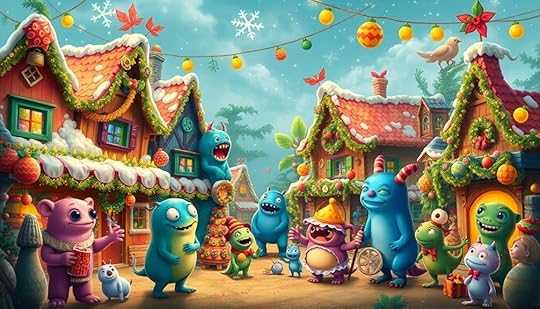
Amid the vibrant tapestry of monster holidays, communities thrive as diverse species come together to celebrate their shared traditions. These gatherings foster strong community bonds, enhancing social ties and promoting cultural exchange among various monster species.
As monsters unite for their unique festivities, local economies could also benefit from the influx of visitors enthusiastic to participate in rituals, purchase merchandise, or indulge in special foods. This creates new markets and seasonal economic activities that can invigorate the area.
Moreover, the observance of monster holidays challenges societal norms and perceptions. As humans interact with monsters during these celebrations, attitudes shift, reducing stigma and fostering acceptance.
Seasonal rhythms established by monster holidays might even alter human calendars, prompting communities to adapt their events and festivities to coexist harmoniously with their monstrous neighbors.
As these celebrations gain visibility, they could inspire new traditions in human cultures, promoting inclusivity and mutual understanding between species.
Fundamentally, the impact of monster holidays on society extends far beyond mere celebration; it reshapes relationships, stimulates economies, and encourages a richer, more interconnected community where both monsters and humans can thrive together.
ConclusionAs you imagine monsters celebrating under a blood-red moon, their laughter mingling with the whispers of ancient trees, you realize how similar their holidays are to ours. Their vibrant parades pulse with life, echoing the joy of human festivities, while their feasts overflow with flavors unknown to your palate. In this tapestry of celebration, the line between the monstrous and the mundane blurs, reminding you that beneath the scales and fangs, they're not so different after all.
Lost in Time: The Eerie Ghost Town of Cahawba, Alabama
Cahawba, Alabama, was once the state's first capital and now stands as a haunting ghost town rich in history. Established in 1819, it was abandoned by 1826 due to flooding and economic decline. As you wander the overgrown streets, you'll encounter remnants like St. Luke's Episcopal Church and the Old Slave Burial Ground, each telling a story of struggles and hope. The Old Cahawba Archaeological Park offers scenic trails and even ghost tours that reveal eerie stories of apparitions and sounds from the past. Discover all the chilling secrets this eerie locale has to offer—there's much more beneath the surface.
Key TakeawaysCahawba was Alabama's first capital, established in 1819 and abandoned by 1826 due to flooding and economic decline.The town features remnants like original streets, St. Luke's Episcopal Church, and an Old Slave Burial Ground, highlighting its historical significance.Visitors can explore over 4 miles of dirt roads, scenic trails, and a visitor center with a small museum and self-guided tour maps.The site is known for ghost stories and eerie occurrences, particularly near the New Cemetery, making it a hotspot for paranormal enthusiasts.Affordable admission and knowledgeable staff enhance the unique experience for history buffs and ghost story lovers alike.Historical Significance of CahawbaCahawba, Alabama's first permanent capital, is a ghost town steeped in historical significance. Established in 1819, it quickly became a hub of political activity but was abandoned by 1826 due to severe flooding and economic decline.
As you explore Old Cahawba Archaeological Park, you'll find remnants of this once-thriving community, including marked original streets and the ruins of significant structures like St. Luke's Episcopal Church and slave quarters.
These archaeological investigations provide a glimpse into early Alabama's history, reflecting the social and political dynamics of the time. The architectural styles of the remaining buildings showcase the cultural richness of the 19th century, allowing you to envision the life that once thrived here.
One of the most poignant sites within the park is the Old Slave Burial Ground, a somber reminder of the African American communities' struggles and their fight for political representation in the post-Civil War era.
As you walk through this ghost town, you can't help but feel the weight of its past and the stories that linger in the air, deeply connecting you to Alabama's complex history.
Exploring the Visitor Experience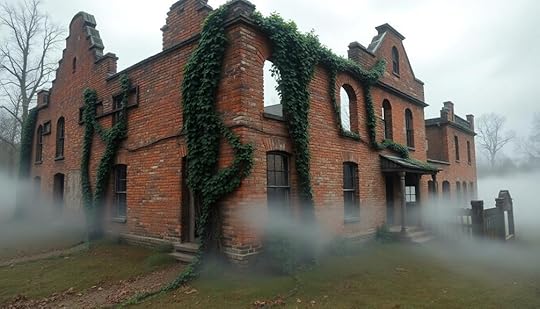
Stepping into Old Cahawba Archaeological Park, you'll find a unique opportunity to connect with history amid the haunting beauty of its ruins. This park, once a thriving town, now stands as one of Alabama's eerie ghost towns, inviting you to explore its rich past.
With over 4 miles of dirt roads, you can choose to walk, bike, or drive through the historical landscapes, allowing for a personalized journey through time.
Upon arrival, don't forget to stop by the Visitor Center. Here, you'll discover a small museum and gift shop offering educational materials about Cahawba's history, along with maps for self-guided tours.
For nature lovers, the park features walking trails that wind through picturesque scenery, perfect for photography and quiet reflection.
If you're feeling adventurous, consider joining one of the special haunted tours offered on select nights. These unique experiences let you explore the park's most haunted locations while engaging in mini-ghost hunts with paranormal investigators.
Whether you're a history enthusiast or just curious about ghost towns, Old Cahawba provides an unforgettable visitor experience.
Unveiling Paranormal Mysteries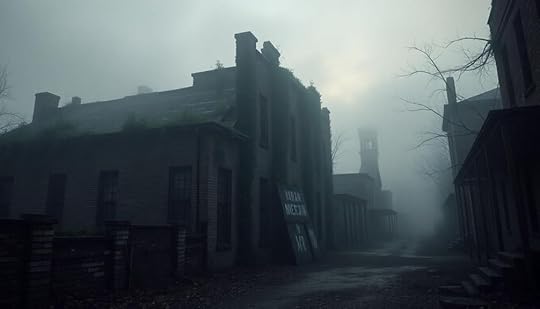
Delving into the chilling tales of Old Cahawba reveals a fascinating tapestry of paranormal mysteries that have intrigued visitors for generations. This ghost town is steeped in ghost stories dating back to the Civil War era, making it a hotspot for those seeking the supernatural.
Among its most haunted locations is the New Cemetery, where eerie occurrences abound. Visitors often report hearing children's laughter that abruptly stops as they approach the cemetery's fence, leaving them with an unsettling feeling.
Eyewitness accounts from local residents and park visitors describe encounters with ghostly apparitions wandering the grounds, enhancing Cahawba's eerie allure. These stories and sightings contribute to the lore that surrounds the town, making it an essential stop for paranormal enthusiasts.
To further explore these mysteries, special Haunted History tours are offered on select nights. These tours guide you through the park's most haunted areas while sharing traditional ghost stories from knowledgeable historians.
Paranormal investigators also engage in mini-ghost hunts during these tours, allowing you to experience the thrill of the unknown firsthand.
Whether you're a skeptic or a believer, Old Cahawba promises a spine-chilling adventure into its haunted past.
Natural Landscape of the Ghost Town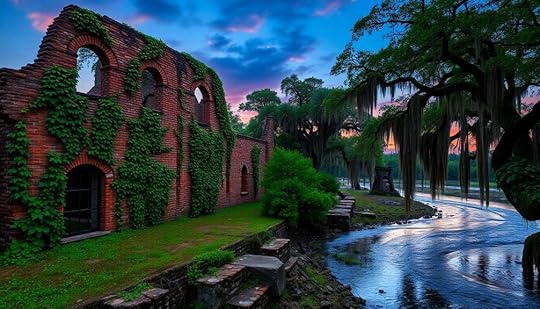
The natural landscape of Old Cahawba captivates visitors with its hauntingly beautiful aesthetic, where overgrown streets intertwine with lush vegetation and Spanish moss hangs gracefully from the trees.
As you wander through this ghost town, the remnants of a tallgrass prairie ecosystem remind you of a world that once thrived here. Today, less than 1% of this unique habitat remains due to agricultural development, making your exploration feel even more significant.
In Cahawba, you'll encounter rare plant species like rosinweed, found exclusively in this region of Alabama, which adds to the area's charm. This natural landscape isn't just visually striking; it also plays an essential role in ongoing preservation efforts through the State Wildlife Action Plan, aimed at restoring and protecting the surrounding prairie ecosystem.
However, be mindful of the tall grasses and thick vegetation, which can harbor ticks and other insects. To make your visit more comfortable, consider exploring during the cooler months.
As you stroll through this ghost town, you'll find that nature's beauty intertwines with its history, creating an unforgettable experience that lingers long after you leave.
Visitor Feedback and Insights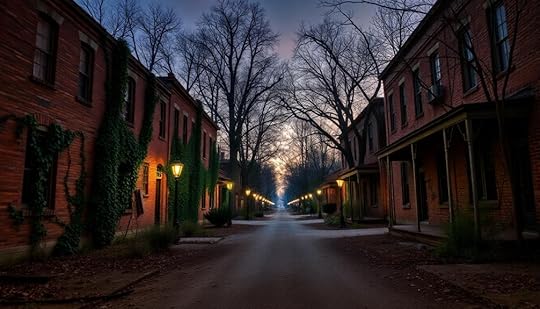
Old Cahawba's haunting beauty and rich history leave a lasting impression on visitors, who often share their insights and experiences. Here's what you might expect during your visit:
Fascinating Structures: While the remnants of buildings intrigue many, some find the limited visible structures can affect their overall experience.Ghostly Encounters: Visitors frequently recount eerie stories, especially near the New Cemetery, where Alabama's most famous ghost, linked to Lukes Episcopal, is said to roam.Helpful Staff: The Visitor Center staff receives praise for their knowledge and friendliness, enhancing the overall experience for history enthusiasts.Affordability: With admission only $2, you'll find Old Cahawba an accessible destination for self-guided exploration.Many guests express a deep appreciation for the site's historical context, noting its unique ghost town atmosphere.
The combination of affordability and the opportunity to explore such a fascinating place keeps visitors coming back.
Whether you're a history buff or a ghost story lover, Old Cahawba promises an unforgettable experience that will linger long after your visit.
Frequently Asked QuestionsWhat Is the Most Famous Ghost Town in Alabama?If you're curious about Alabama's ghost towns, Cahawba stands out as the most famous. Its haunting history, ghost stories, and remnants of the past create an intriguing destination for those interested in the supernatural and history.
Why Was Cahawba Abandoned?Cahawba was abandoned due to severe flooding and economic decline. You'll find that repeated disasters damaged infrastructure, while nearby Selma's rise in commerce made Cahawba unsustainable, leading residents to seek more prosperous locations.
Can You Visit Cahaba, Alabama?Yes, you can visit Cahaba, Alabama. The Old Cahawba Archaeological Park is open daily, offering trails and historical ruins. Don't forget to check out the Visitor Center for maps and take part in haunted tours!
Is Cahaba, Alabama Haunted?You'll find many believe Cahaba, Alabama, is haunted. Visitors report eerie sounds, mysterious apparitions, and ghostly encounters. If you're curious, join a Haunted History Tour to explore the town's chilling past and its ghostly legends.
ConclusionAs you wander through the haunting beauty of Cahawba, you're not just stepping back in time; you're dancing with its ghosts. The echoes of history linger in the air, inviting you to uncover the stories that shaped this forgotten town. Whether you're drawn by the allure of its past or the thrill of the paranormal, Cahawba offers a unique experience that'll leave you captivated. Don't just visit; let the spirit of Cahawba embrace you.
November 15, 2024
What if Monsters Have Rich Cultural Traditions and Customs
If monsters had rich cultural traditions and customs, you'd find them as significant as any human society. They'd embody values that teach moral lessons, reflecting our fears and hopes. Festivals like Japan's "Obon" or Mexico's "Day of the Dead" would celebrate these beings, fostering community ties and honoring ancestral spirits. Artistic expressions would showcase their stories through vibrant performances and intricate masks. You'd see respect for nature and ethical frameworks guiding their interactions. Monsters would reveal the complexities of coexistence, highlighting the importance of diversity. There's so much more to uncover about these monstrous rich tapestries of culture.
Key TakeawaysMonsters reflect societal values, embodying moral lessons and illustrating the complexities of human-supernatural relationships across various cultures.Unique festivals, such as Japan's "Obon" and Mexico's "Day of the Dead," celebrate monsters, fostering community spirit and cultural identity.Rituals honoring monsters, like the Chinese "Ghost Festival," promote community solidarity and reinforce cultural heritage through storytelling practices.Artistic expressions, including masks and performances at festivals, explore fear and reverence, shaping cultural identity within monster communities.Inter-monster philosophies emphasize respect and cooperation, highlighting shared ideals that mirror human societal values and promote coexistence with nature.Cultural Traditions of Monsters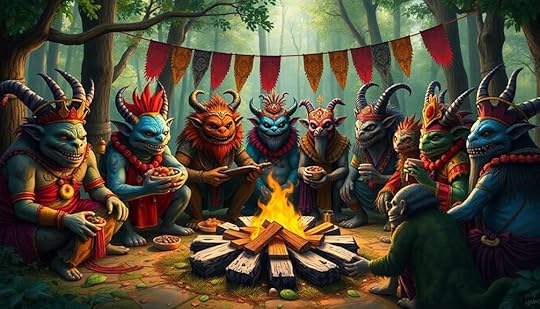
Exploring the cultural traditions of monsters reveals a fascinating tapestry woven with rituals, festivals, and storytelling that shape human understanding of fear and morality. Across various cultures, monsters play a crucial role in expressing societal values and beliefs.
In Japan, the concept of "yokai" encompasses diverse monsters, each with unique customs. During the annual "Obon" festival, you honor the spirits of the deceased, including these fantastical creatures, reinforcing the connection between the living and the dead.
In Mexico, the Day of the Dead (Día de los Muertos) blends reverence and celebration, showcasing decorations and altars that pay homage not only to deceased relatives but also to monstrous figures from folklore. This duality invites reflection on life and death, as well as the nature of fear.
In the Caribbean, the "Duppy" serves as a ghostly figure in local customs and storytelling, often linked to rituals designed to ward off evil spirits, protecting the community.
Meanwhile, ancient Greeks explored societal fears through monstrous characters during the festival of Dionysia, using theater to reflect the complexity of human nature. Each of these traditions emphasizes how monsters help convey important moral lessons.
Unique Festivals and Celebrations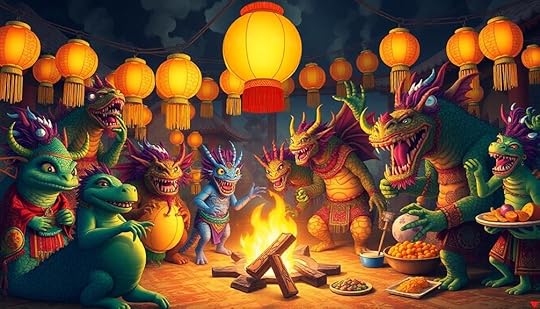
Monsters play a crucial role in cultural celebrations around the world, and you'll find that many festivals honor these beings with joy and reverence.
From Japan's vibrant matsuri to Mexico's Day of the Dead, these events showcase local lore and foster community spirit.
As you explore these unique festivities, you'll see how rituals surrounding monsters create a sense of identity and connection among people.
Cultural Significance of MonstersThroughout history, various cultures have celebrated unique festivals that honor the intricate relationship between humans and monsters. These events reflect the cultural significance of monsters, illustrating how societies view and interact with the supernatural.
In Japan, the "Obon" festival welcomes ancestral spirits, often depicted as monstrous figures, back to their homes with lanterns and rituals, showcasing a deep respect for the past.
Mexico's "Day of the Dead" embraces skeletons and ghoulish figures, celebrating the return of deceased loved ones, which reveals a cultural acceptance of death and monstrous representations.
In Bhutan, the "Paro Tsechu" festival features the "Gorge of the Monsters," where dancers embody fearsome creatures to convey moral lessons, blending entertainment with spirituality.
Similarly, Sweden's "Midsummer" festivities honor trolls and mythical beings, highlighting how monstrous folklore enriches community bonds.
Meanwhile, India's "Naga Panchami" sees worship of serpent deities, recognized as both monstrous and divine, illustrating the complex cultural roles monsters play in religious practices.
These festivals not only celebrate the monstrous but also serve as platforms for exploring deeper themes of life, death, and morality, emphasizing the enduring cultural significance of monsters across the globe.
Festivals Celebrating Monster LoreMany cultures host vibrant festivals that bring monster lore to life, celebrating the rich tapestry of myths and legends surrounding these fascinating figures. In Japan, the "Matsuri" showcases giant floats representing traditional monsters, filling the streets with color and excitement.
Meanwhile, Mexico's "Festival of the Dead" intertwines monstrous folklore with remembrance, featuring altars and costumes that honor both the deceased and mythical creatures.
In the Caribbean, the "Jumbie Festival" captivates audiences with music, dance, and storytelling that animate spirits and monsters, creating an unforgettable cultural experience.
Austria and Germany celebrate "Krampusnacht," where folks dress as the horned monster Krampus, blending festive cheer with a little fright during the Christmas season.
The "Dia de los Muertos" further highlights how monster lore can reflect cultural customs, incorporating figures like La Llorona to honor the connection between life and death.
These festivals not only preserve monster legends but also foster community spirit and creativity, inviting everyone to participate in a celebration that honors the mysterious and the magical.
Each event is a demonstration of the enduring allure of monsters in our shared cultural heritage.
Rituals and Community EngagementCultural festivals often serve as vibrant expressions of community engagement, where rituals honoring monstrous figures bring people together in celebration and reflection. These events, rooted in traditions, highlight the fascinating intersections of culture and Monster Studies. Many of these rituals also reflect the deeper psychological impacts of monster lore, as they help communities process their fears and beliefs about the unknown recurring themes in global supernatural tales.
Take the Japanese Obon festival, for instance, where families honor ancestral spirits, often depicted as monstrous entities, fostering a sense of connection and remembrance.
In Mexico, the Day of the Dead seamlessly blends the living and the dead through skeleton imagery, inviting communities to embrace their cultural beliefs about life and mortality. Similarly, the Chinese Ghost Festival, or Hungry Ghost Festival, involves rituals to appease wandering spirits, emphasizing community solidarity in recognizing and addressing these monstrous beings' needs.
African festivals, like the Eyo Festival in Lagos, showcase masquerades embodying ancestral spirits with monstrous traits, reinforcing cultural heritage while promoting unity. Meanwhile, the Scottish Beltane festival uses fire rituals to ward off perceived threats, symbolizing community resilience and the welcoming of fertility and prosperity.
These unique celebrations demonstrate how rituals centered around monsters not only reflect cultural values but also foster community bonds, making them essential to understanding our shared human experience.
Rituals and Storytelling Practices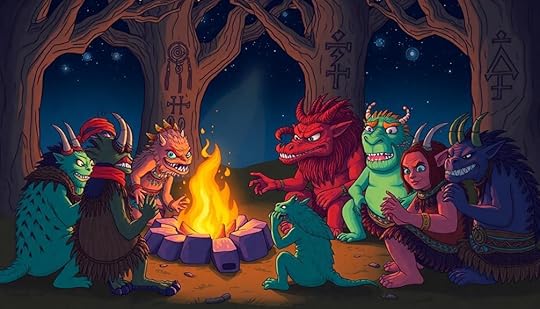
Rituals and storytelling practices surrounding monsters play an important role in shaping community values and beliefs. Many cultures hold rituals that honor these beings, such as offerings or ceremonies designed to appease them. These acts foster safety and harmony within the community, reinforcing the idea that respect is essential when dealing with the unknown.
Storytelling practices often feature monsters as central figures, serving as cautionary tales that teach significant lessons about bravery and the consequences of one's actions. Through these narratives, children learn about caution and moral integrity, embedding these lessons into their understanding of the world.
In some indigenous cultures, monsters appear in creation myths, symbolizing the eternal struggle between good and evil or the delicate balance of nature. Festivals, like Mexico's Day of the Dead, celebrate monstrous figures, acknowledging them with rituals that reflect deep cultural reverence rather than simple fear.
Moreover, the use of masks and performances in rituals allows communities to confront their fears in a controlled and artistic manner. By engaging with these customs, you participate in a rich tapestry of beliefs that honors the complexity of monsters and their place in human experience.
Artistic Expressions Within Monster Communities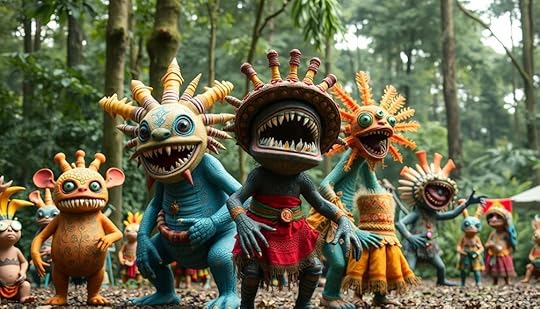
When you explore the artistic expressions within monster communities, you'll find that rituals and celebrations play a crucial role in shaping their unique cultural identity.
Symbolic art forms, like traditional masks and intricate carvings, often reflect their rich storytelling traditions.
These creative practices not only honor their heritage but also connect them to the environment and each other.
Rituals and CelebrationsThroughout the year, monster communities actively engage in vibrant festivals that celebrate their rich heritage. These annual events honor their origins through traditional music, dance, and storytelling, allowing monsters to express their unique cultural identity. The "Feast of Shadows" is one such ritual, where monsters gather to share tales of their ancestors, reinforcing social bonds and collective memory. This sense of community is akin to the community and support networks that amplify feelings of abundance in human cultures.
During these festivities, you'll see intricate masks and costumes that represent the diverse identities and mythologies of the monsters, serving as a powerful means of cultural preservation. Seasonal celebrations often align with natural cycles, showcasing their connection to the environment through art and performance.
Rites of passage also play a crucial role in monster culture. Significant life changes are marked by artistic showcases, such as carving or painting, affirming their cultural identity and community ties.
These rituals and celebrations highlight the importance of artistic expressions within monster communities, weaving together tradition, creativity, and social connection. By participating in these events, you not only witness the rich tapestry of monster life but also gain an appreciation for their deep-rooted customs and vibrant expressions of identity.
Symbolic Art FormsArtistic expressions in monster communities vividly reflect their cultural identity and values through a variety of symbolic art forms. These forms often take shape as masks and totems, representing the beliefs and values that define their societies.
You'll notice that many artworks incorporate elements from their natural habitats, showcasing a profound connection to the environment that informs their customs and traditions.
Ritualistic performances and dances, adorned with unique costumes and body paint, are essential to these artistic expressions. They convey stories of origin and communal history, reinforcing the bonds among community members.
Monster art frequently features hybrid forms, blending human and animal characteristics, which illustrates their complex identities and the societal constructs surrounding them.
Intricate carvings and textiles also play a crucial role in their craftsmanship, telling narratives of experiences, struggles, and triumphs.
These symbolic art forms foster a sense of unity and shared heritage, allowing you to appreciate the rich tapestry of their cultures. By engaging with these artistic expressions, you gain insight into the values and beliefs that shape the lives of these fascinating communities.
Storytelling TraditionsStorytelling traditions in monster communities act as the heartbeat of their cultural identity, preserving history and folklore through vibrant oral narratives.
These tales, passed down through generations, often contain moral lessons and cautionary messages that reflect the community's values and fears. You'll find that storytelling isn't just about the stories; it's a communal experience that strengthens social bonds and fosters unity.
Consider these aspects of storytelling traditions:
Moral Lessons: Stories often teach important values, helping younger generations understand their customs and societal norms.Artistic Expressions: Narratives are often accompanied by songs, dances, and visual arts, enriching the overall experience and emotional impact.Community Gatherings: Storytelling events serve as social gatherings, reinforcing connections among community members and ensuring shared understanding of their heritage.Cross-Cultural Exchanges: Many monster cultures engage in storytelling exchanges, showcasing their unique traditions while learning from others, which further enriches their narratives.Through these storytelling traditions, monsters keep their history alive, ensuring that their rich cultural legacy continues to thrive.
Inter-Monster Philosophies and Moral Codes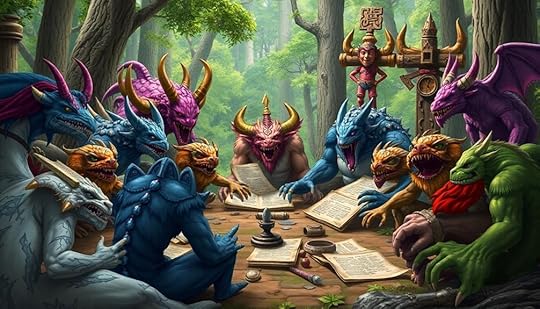
Monsters often come together to forge their own philosophies and moral codes, revealing a rich tapestry of values that emphasize community and respect. These inter-monster philosophies often reflect shared ideals, especially during narratives where diverse monster tribes unite against common foes. This collaboration fosters a sense of belonging and mutual respect among them.
For instance, in the Japanese tradition, the concept of "yokai" showcases how monsters embody moral lessons, emphasizing harmony and respect for nature. Their ethical frameworks serve as guides for both monsters and humans. Rituals, like annual festivals honoring local monsters, reinforce these moral codes, promoting understanding and cooperation.
Monsters also engage in philosophical dialogues through storytelling, where they explore moral dilemmas that resonate with broader societal concerns, such as balancing aggression and compassion.
Additionally, inter-monster councils in folklore highlight the complexity of their customs, as different species convene to discuss ethical considerations and territorial disputes. This intricate interplay of beliefs and values showcases the depth of inter-monster philosophies, illustrating how these creatures navigate their relationships and environments with a profound sense of ethics and community.
Legends and Ancestral Histories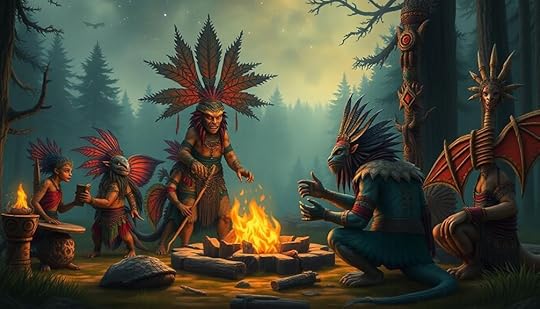
Throughout history, various cultures have woven intricate legends around monsters that serve as both cautionary tales and reflections of societal values.
These tales not only entertain but also impart lessons about human behavior and the natural world. As you explore these stories, you'll discover how different cultures interpret the term monster in unique ways:
Wendigo (Native American): This legendary creature warns against greed and the dire consequences of cannibalism, illustrating the importance of community and respect for life.Humbaba (Mesopotamian): Featured in the Epic of Gilgamesh, this monster guards the Cedar Forest, embodying humanity's fear of nature and the unknown, urging respect for the environment.Yōkai (Japanese): These supernatural beings come in various forms, each with distinct customs, reflecting societal fears and moral lessons, often teaching about the consequences of human actions.Mokele-Mbembe (African): This dinosaur-like monster symbolizes nature's mysteries and stresses the significance of respecting the natural world, highlighting humanity's connection to the earth.Through these legends, you can see how the term monster transcends mere horror, revealing deep cultural insights.
Social Structures and Hierarchies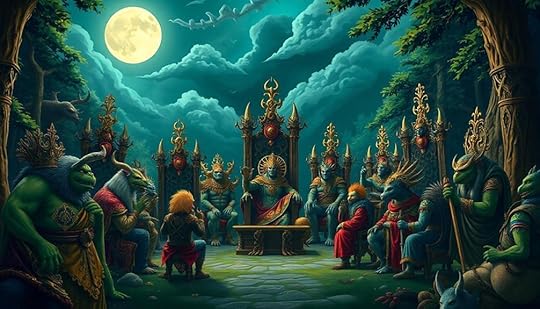
In many cultures, the social structures of monsters reflect the complexities of human societies. These creatures often establish hierarchies based on age, strength, or intelligence, which dictate their roles within communities.
You'll find that many monsters emphasize familial bonds, nurturing their offspring and demonstrating a strong sense of kinship and community support.
Within these societies, designated leaders or elders often guide their groups, showcasing a governance system that values wisdom and experience. This respect for authority helps maintain order and continuity among monsters, just as it does in human cultures.
Rituals and customs play a significant role in these social structures, with elaborate ceremonies marking important life events like births or deaths. Such practices underscore the importance monsters place on communal memory and identity, reflecting their rich cultural traditions.
Additionally, interactions between monster societies and humans often highlight power dynamics, where monsters impose their social norms on human encounters. This interplay not only reveals the complexities of their hierarchies but also challenges your understanding of what it means to belong in a community.
The Role of Monsters in Folklore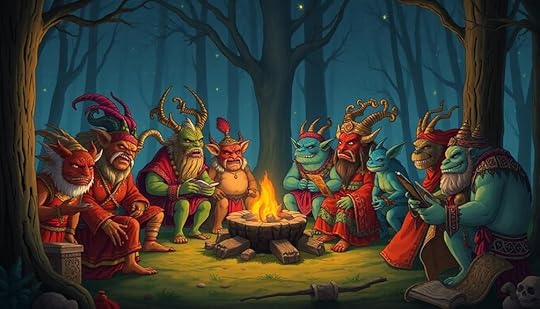
Folklore often brings monsters to life, using them as powerful symbols that reflect cultural beliefs and societal fears. These creatures aren't just figments of imagination; they serve crucial roles within their narratives.
Here are some key aspects of monsters in folklore:
Moral Lessons: Monsters like Baba Yaga teach important lessons about obedience and respect, often through their fearsome qualities.Cultural Reflection: Creatures such as the Wendigo symbolize greed and the consequences of overindulgence, highlighting societal anxieties.Guardianship: Monsters can also act as protectors of sacred spaces, exemplified by the Nuckelavee, which safeguards the natural order against human interference.Transformative Roles: Many folkloric monsters, like Grendel from "Beowulf," shift between antagonist and ally, reflecting human vulnerabilities and fears.Coexistence and Diversity in Society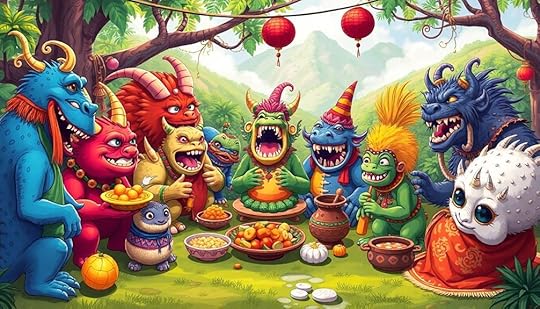
Embracing the rich tapestry of cultural traditions reveals how monsters play an essential role in promoting coexistence and diversity within societies. Many cultures celebrate monsters as integral parts of their mythology, influencing social norms and moral lessons. For instance, in Japan, festivals honoring yōkai highlight the importance of these supernatural beings, fostering a sense of community and shared identity.
Indigenous cultures often view monsters as protectors of sacred spaces, with rituals designed to guarantee harmony between humans and non-human entities. This respect for the diversity of life emphasizes the need for coexistence. Folklore frequently illustrates negotiation and understanding, as seen in tales featuring the Wendigo, urging caution and respect for nature.
Moreover, traditions like the Day of the Dead in Mexico showcase the cultural significance of monsters, promoting a vibrant community spirit while acknowledging the complexities of living alongside the monstrous. Through stories and rituals, knowledge about monsters serves as a metaphor for societal challenges, teaching lessons about bravery and cleverness.
Ultimately, these rich cultural traditions highlight how coexistence with monsters enhances the tapestry of human experience, encouraging appreciation for diversity in all its forms.
ConclusionMonsters aren't just figments of nightmares; they're vibrant beings with rich traditions that paint their world in colors we often overlook. As you explore their unique festivals and storytelling, you'll find a tapestry of life woven with rituals and philosophies that mirror our own. Just like us, they navigate their social structures, creating a diverse coexistence. So, the next time you hear a rustle in the dark, remember: it might just be a celebration waiting to unfold.
Charleston’s Chilling Legends: A Guide to Its Haunted History
If you're intrigued by Charleston's chilling legends, you'll find a city rich with haunted tales. Explore the Old City Jail, where ghostly inmates, including pirates and Civil War soldiers, roam. In the Circular Congregational Church graveyard, listen for whispers and feel sudden temperature drops. The Old Exchange Building and Provost Dungeon tell stories of tortured prisoners from the Revolutionary War. Don't miss the eerie melodies associated with Harriott Mackie at St. Michael's Episcopal Church. Each site invites you to experience a dark legacy that lingers. Uncover more tales about this haunted city's past that will send shivers down your spine.
Key TakeawaysCharleston's haunted history is shaped by wars, epidemics, and slavery, creating a rich tapestry of ghostly tales and legends.The Old City Jail, operational from 1802 to 1939, is notorious for sightings of former inmates, including pirates and Civil War prisoners.Circular Congregational Church Graveyard, established in 1681, is known for ghostly voices and sudden temperature drops, linked to infamous criminal Lavinia Fisher.St. Michael's Episcopal Church features the ghost of Harriott Mackie, who is said to play wedding music on her wedding anniversary.Engaging tours like Nightly Spirits and Charleston Unchained offer insights into Charleston's haunted locations and chilling legends.Charleston's Haunted HistoryCharleston's haunted history invites you to explore its shadowy past, where tales of wars, epidemics, and slavery intertwine to create a rich tapestry of paranormal intrigue.
This city is steeped in Charleston ghost stories that echo through its haunted places, drawing you in with their chilling narratives. The Old City Jail, operational from 1802 to 1939, is infamous for ghostly encounters. Visitors often report eerie sensations and sightings of past inmates, including pirates and Civil War prisoners.
Venture into the Circular Congregational Church graveyard, the oldest in Charleston, established in 1681. Here, you might experience unexplained phenomena, such as apparitional footsteps and sudden temperature drops, leaving you with an unsettling impression of its history.
The Old Exchange Building and Provost Dungeon offer another glimpse into Charleston's haunted history. This site, notorious for Revolutionary War imprisonment and torture, is said to be home to restless spirits.
Reports of ghostly apparitions and distant sounds of suffering create an atmosphere rich in mystery. As you walk through these historic sites, you'll find that Charleston's past is alive in ways you might never expect.
Notable Ghostly Locations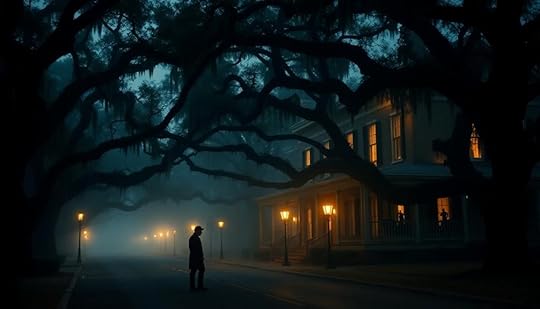
While exploring Charleston's haunted locations, you'll encounter a variety of sites that evoke both history and mystery. One of the most notorious is the Old City Jail, operational from 1802 to 1939, where ghostly apparitions of former inmates, including pirates, are frequently reported.
The Old Exchange Building and Provost Dungeon, a chilling Revolutionary War site, is known for its brutal treatment of prisoners, leading to spine-tingling ghost stories and disembodied cries echoing through its halls.
Don't miss the Circular Congregational Church Graveyard, Charleston's oldest graveyard, where visitors often experience unexplained phenomena like sudden temperature drops and distant voices.
St. Michael's Episcopal Church is another highlight, famed for the ghost of Harriott Mackie, who allegedly fills the air with wedding music played by an unseen organist—captivating both ghost enthusiasts and history buffs.
Lastly, the Battery Carriage House Inn stands out among Charleston's Most Haunted hotels, notorious for sightings of a headless torso and other paranormal activity.
These haunted sites collectively weave a rich tapestry of Charleston's history and culture, inviting you to experience their eerie allure.
Infamous Ghost Stories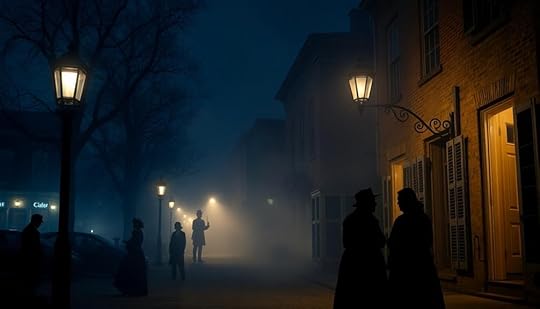
If you think Charleston's history is chilling, wait until you hear the ghost stories tied to its infamous locations.
From Lavinia Fisher's haunting presence to the eerie encounters at the Old City Jail, every corner seems to whisper tales of the past.
Get ready to explore some of the most legendary ghostly experiences that keep visitors on the edge of their seats.
Notable Hauntings in CharlestonAs you stroll through the historic streets of Charleston, the echoes of the past may send chills down your spine, especially when you hear about the city's infamous ghost stories.
One of the most notorious hauntings occurs at the Old City Jail, where the brutal conditions led to the spirits of pirates and Civil War prisoners roaming its halls.
Then there's the Old Exchange Building and Provost Dungeon, a site steeped in Revolutionary War history.
Here, the restless spirits of Patriots and British soldiers linger, forever tied to the suffering they endured.
The Circular Congregational Church Graveyard, established in 1681, is another location where visitors report ghostly voices and sudden temperature drops, hinting at its haunted history.
At St. Michael's Episcopal Church, you might encounter the ghost of Harriott Mackie, who mysteriously plays wedding music from the organ on her anniversary, even when no one is there.
Legendary Ghost EncountersCharleston's ghost stories are as legendary as its historic architecture, drawing both skeptics and believers alike. Each haunted location tells a tale of restless spirits and echoes of the past. You'll find yourself captivated by these ghostly tales that weave through the city's rich history.
Haunted LocationNotable Ghost StoryHistorical InformationOld City JailChilling apparitions of former inmatesOperational from 1802 to 1939Circular Congregational ChurchLavinia Fisher's spirit wanders the graveyardNotorious female criminal executedSt. Michael's Episcopal ChurchHarriott Mackie's wedding march fills the airBride who died on her wedding dayPoogan's PorchSightings of Poogan the friendly dogHistoric restaurant, Poogan died in 1979Dock Street TheatreApparitions of past performers, especially a woman in whiteRenowned for ghostly performancesVenture into Charleston, and you might just encounter these spectral figures that continue to haunt the city, each with a story begging to be told.
Tour Recommendations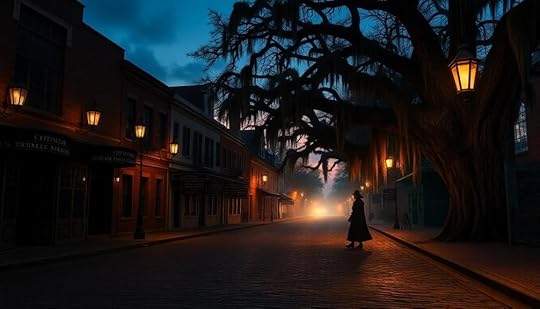
When exploring the haunted history of Charleston, you'll find several enthralling tours that bring the city's eerie past to life. A top choice is Nightly Spirits, which offers a ghost tour that dives deep into Charleston's rich haunted history. Conducted nightly at 8 PM, this tour lasts about an hour and is perfect for all ages, with a maximum group size of 10 for a more intimate experience.
If you're interested in the more controversial aspects of Charleston's past, consider the Charleston Unchained tour, which meets daily at 10 PM.
Meanwhile, the Southern Charm Foods Tour is an excellent option if you want to combine local cuisine with historical insights.
Don't miss out on iconic haunted locations like the Old City Jail and the Old Exchange Building, where visitors often report eerie sensations and ghostly sightings.
Each tour provides a chance to learn about lesser-known haunted spots and intriguing ghost stories, enriching your understanding of Charleston's chilling history.
With so many options, you're sure to find a tour that suits your interests while uncovering the mysterious places in Charleston.
Reader Engagement and Feedback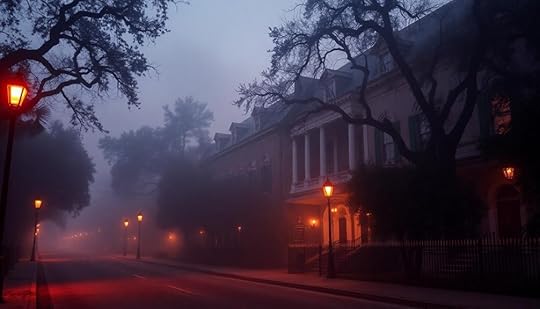
As you explore Charleston's haunted history, many readers share their own eerie experiences that resonate with the ghost stories in "Charleston Ghosts."
These emotional connections not only enhance your understanding but also create a community of fellow ghost enthusiasts.
What stories have you encountered that made you feel a personal link to Charleston's spectral past?
Reader Experiences SharedWhat makes a ghost story truly enthralling? It's often the blend of spine-tingling tales with rich historical context. Many readers of James Caskey's "Charleston Ghosts" have shared how the book deepens their understanding of Charleston's haunted places while they explore the dark corners of its past. Denise Roffe's "Ghosts and Legends of Charleston" has also captivated history buffs with its engaging narratives about graveyards and plantations.
Those who read these collections before starting a walking tour of Charleston often report a heightened experience, connecting the dots between stories and locations. Below is a summary of reader experiences:
Book TitleReader FeedbackCharleston GhostsBlends ghost stories with historical factsGhosts and Legends of CharlestonEngaging style, emotional depth, compelling narrativesAlthough some readers suggested improvements in editing, the overall feedback highlights the appreciation for well-researched content. These stories not only thrill but also enrich your visit to Charleston, making each ghost story an unforgettable part of your journey.
Emotional Connections MadeBuilding on the insights from reader experiences, the emotional connections forged through the stories in "Ghosts and Legends of Charleston" truly stand out. As you explore South Carolina's haunted history, you'll find that tales of graveyards and plantations resonate deeply, allowing you to connect with the spirits of the past.
The firsthand accounts and eyewitness testimonies evoke empathy, making you feel for those who endured tragic fates. Charleston's rich history, intertwined with ghostly anecdotes, invites you to form personal connections to the locations and legends.
Readers often share how they felt emotionally invested in figures like Lavinia Fisher, whose complex legacy challenges perceptions and prompts reflection. The approachable writing style enhances your engagement, making you feel like a participant in Charleston's haunted narrative.
Whether you're on a ghost tour or exploring the city's eerie landmarks, these emotional connections will linger long after you've left. Through the blend of historical facts and chilling stories, you'll discover that Charleston's haunted tales not only entertain but also resonate within you, forging a bond with the past that's both haunting and profound.
Practical Tips for Visitors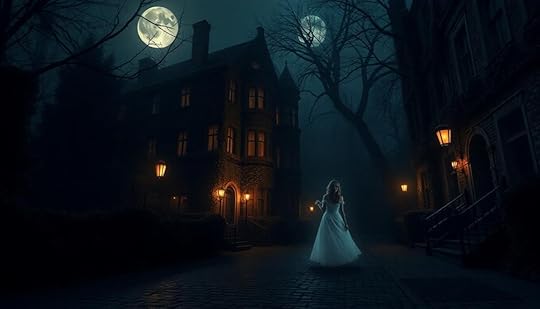
When planning your visit to Charleston, consider joining one of the many ghost tours available, like Nightly Spirits, which starts at 8 PM from City Hall. These tours last about an hour and are perfect for all ages, providing a glimpse into Charleston's haunted history.
During your recent trip, you'll have the chance to explore eerie locations like the Old City Jail and the Circular Congregational Church Graveyard, known for their ghostly encounters.
To make the most of your haunted adventure, keep these practical tips in mind:
Choose the right tour: Select a ghost tour that aligns with your interests. Nightly Spirits and specialized options like "Charleston Unchained" are excellent choices.Respect the sites: Always be mindful of the historical significance of the locations you visit.Dine at haunted eateries: Experience the local culinary scene at places like Poogan's Porch, known for its ghostly legends.Engage with tour guides: Don't hesitate to ask questions; they're knowledgeable about Charleston's long history and its haunted tales.Enjoy your exploration of the streets of Charleston!
The Legacy of Hauntings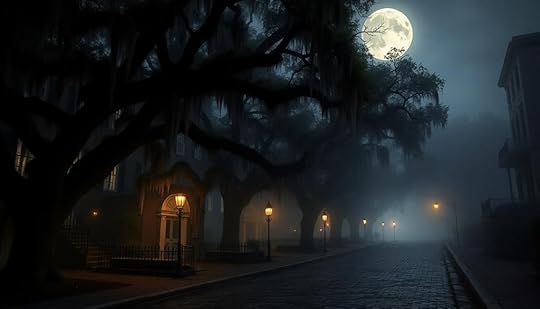
Charleston's haunted history weaves a mesmerizing tapestry of stories rooted in its colonial past, where significant events like wars, piracy, and epidemics have left spectral echoes throughout the city.
The Old City Jail, operational from 1802 to 1939, is home to Charleston's most famous ghostly apparitions. Its notorious inmates, including pirates and Civil War prisoners, are said to haunt the grounds, eliciting eerie sensations for visitors.
As you stroll through the Circular Congregational Church Graveyard, established in 1681, you'll encounter the final resting place of Revolutionary War soldiers and yellow fever victims.
Many have reported unexplained phenomena, enhancing the graveyard's chilling atmosphere.
The legend of Harriott Mackie, a bride who tragically died on her wedding day, adds another layer to Charleston's haunted history.
At St. Michael's Episcopal Church, you might hear the ghostly sounds of wedding march music, echoing through time without a musician present.
Frequently Asked QuestionsWhy Do They Say Charleston Is Haunted?They say Charleston's haunted because of its dark history filled with wars, epidemics, and tragedies. You'll hear ghost stories tied to notorious locations, where lingering spirits reportedly roam, leaving behind chilling sensations and eerie encounters.
Why Is Poogan's Haunted?Did you know over 60% of diners at Poogan's Porch report feeling a ghostly presence? It's haunted due to the spirit of Poogan, a friendly dog, who still wanders, nudging guests and bringing warmth.
What's the Most Haunted Place in SC?You'll find that the Old City Jail in Charleston is often considered the most haunted place in South Carolina. Its dark history and tales of tortured souls make it a chilling destination for ghost enthusiasts.
Is the Aiken Rhett House Haunted?Like a whisper from the past, the Aiken-Rhett House seems haunted. Visitors often report ghostly apparitions and sudden chills, suggesting the spirits of former residents linger, making it a must-see for thrill-seekers and history buffs alike.
ConclusionSo, whether you're a skeptic or a believer, Charleston's haunted history is sure to give you chills—just not the kind you'd expect from a summer day! As you stroll through the cobblestone streets, keep your eyes peeled; you might just find yourself sharing a ghostly tale over a drink, proving that some spirits really do enjoy a good chat. After all, who wouldn't want to sip tea with a specter or two? Enjoy the eerie adventure!
November 14, 2024
What if There Are Monster Artists and Musicians Creating Unique Art
If you encounter monster artists and musicians creating unique art, you're witnessing a complex interplay of genius and personal flaws. Many celebrated figures, like Picasso and Nabokov, have left legacies marked by moral ambiguity. While their work captivates, their troubling behaviors challenge how you engage with it. You might feel admiration mixed with discomfort, reflecting on the ethical implications of supporting such artists. As conversations shift toward accountability and ethical consumption, it's crucial to navigate your values while appreciating creativity. There's much more to ponder about how these dynamics shape our perceptions of art.
Key Takeaways"Monster artists" may produce extraordinary, unique art, despite having problematic behaviors or controversial personal histories.The duality of artistic genius and moral shortcomings raises questions about the separation of art from the artist's ethics.Cultural shifts emphasize accountability, challenging the romanticized notion of the "tortured artist" while still recognizing their creative contributions.Engaging with their work can evoke complex emotions, balancing admiration for their art with moral objections to their actions.Ethical consumption encourages critical evaluation of artists, influencing support for those who uphold integrity alongside creativity.The Duality of Artistic Genius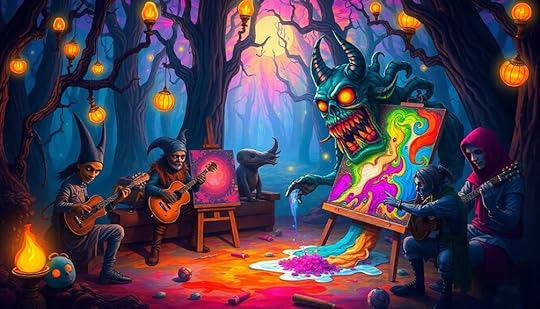
Throughout history, the idea of the "art monster" has captivated both audiences and critics alike. You might find yourself drawn to the notion that exceptional artists often come with a dark side, leading to the belief that true genius requires some form of personal chaos. This perspective has been shaped by figures like Vladimir Nabokov and Roman Polanski, whose troubling behaviors overshadow their remarkable contributions to art.
However, it's crucial to question this myth. Contemporary discourse is shifting, emphasizing that great art doesn't have to stem from moral ambiguity. You can look to insights from filmmakers like Steven Soderbergh who argue that artistic brilliance can flourish without destructive habits.
Instead of idolizing the "art monster," consider the positive role models within the artistic community, such as George Saunders. These artists demonstrate that integrity and ethical behavior can coexist with creativity, enhancing their art rather than detracting from it.
As you navigate your own artistic journey, remember that you don't have to embrace turmoil to create something meaningful. Aspiring for personal decency can lead to a healthier, more sustainable approach to being an artist. Your art can flourish without the burden of the "art monster" myth.
Historical Perspectives on Art and Morality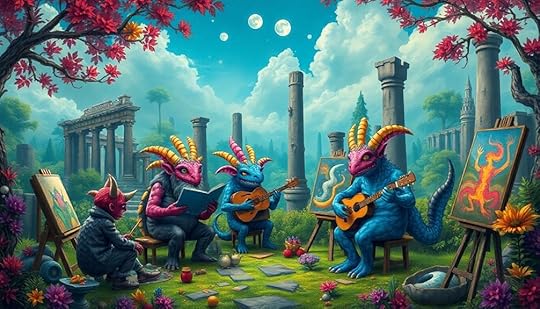
As you explore the legacies of artists throughout history, you'll notice a recurring tension between their creative genius and personal morality. Many celebrated figures, like Picasso and Nabokov, produced remarkable work even as they exhibited troubling behaviors, prompting society to grapple with the ethics of their artistry.
This reflects the broader philosophical exploration of existential themes that challenge conventional views on existence and self-identity.
Today, however, there's a shift in appreciation, recognizing that a commitment to integrity can enhance not just the artist's reputation but also the depth of their work.
Artistic Legacies and ControversyWhile the legacies of many celebrated artists often evoke admiration, their troubling personal behaviors raise complex questions about the interplay between art and morality. You might find yourself grappling with how to reconcile the brilliance of their work with their questionable actions.
Historically, figures like Roman Polanski and Richard Wagner have sparked debates about whether art from the artist can be appreciated independently of their personal flaws.
Consider these points:
The notion of the "art monster" suggests that some artists prioritize creativity over ethical responsibilities.The romanticized "tortured artist" view is under scrutiny; abusive behavior can't be justified by artistic merit.Insights from filmmakers like Steven Soderbergh highlight that genius doesn't require personal turmoil.Artists like George Saunders demonstrate that ethical behavior can enhance an artist's legacy.As you reflect on these complexities, it becomes clear that the conversation around artistic legacies is evolving. A growing recognition of the need for accountability challenges the idea that artistic brilliance excuses harmful behavior, prompting you to reconsider how you engage with art from the artist.
Morality Through TimeThe evolving conversation about artistic legacies has prompted a closer examination of morality in the context of art throughout history. You've likely encountered figures like Roman Polanski and Richard Wagner, celebrated for their artistic contributions despite their morally questionable actions. This dichotomy raises critical questions about the "art monster" concept, where creators often prioritize their art over ethical considerations.
Historically, society tended to glorify troubled artists, equating their genius with personal turmoil. However, contemporary perspectives challenge this notion, asserting that artistic merit shouldn't excuse immoral conduct. As awareness of the consequences of abusive behavior grows, you see a shift in how we view these legacies.
Debates now center on accountability, pushing you to reconsider how personal integrity factors into an artist's worth. The narratives surrounding these figures are evolving, reflecting a societal need to hold artists accountable for their actions.
The complexities of morality in art reveal that while the works may endure, the artists' failings can't be overlooked. Ultimately, it's crucial to recognize that appreciating art doesn't mean ignoring the artist's character—an important lesson in our ongoing discourse about morality and creativity.
Cultural Shifts in AppreciationCultural appreciation of art has transformed considerably, shifting from romanticizing the "tortured artist" to demanding accountability for personal conduct.
You might find it surprising that many once-celebrated figures like Nabokov are now scrutinized for their questionable morals. As society evolves, there's nothing admirable about prioritizing art at the expense of relationships or ethical standards.
Recent discussions surrounding infidelity exposure highlight the complexities of personal conduct in the creative domain. This shift has led to a reevaluation of how we perceive artists and their legacies:
The "tortured artist" trope is increasingly seen as problematic.Abusive behavior is recognized as inexcusable, regardless of artistic merit.Insights from filmmakers like Steven Soderbergh highlight that negativity detracts from creativity.There's a growing admiration for artists who maintain integrity alongside their creative pursuits.Emotional Responses to Problematic Artists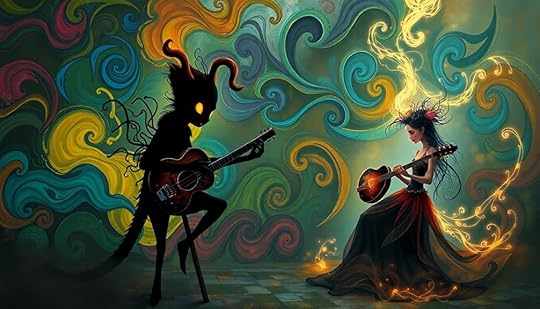
Steering through the emotional landscape surrounding problematic artists can feel like walking a tightrope, balancing admiration for their work against moral objections to their behavior. You might find yourself caught off guard by spontaneous emotional responses, complicating the journey of separating the art from the artist.
The metaphor of "the stain" captures how knowledge of an artist's misconduct permanently alters your engagement with their creations, making it tough to appreciate their art without the shadow of their actions looming over you.
Your personal history and the context in which you consume art shape your reactions, often leading to conflicting feelings. While critics argue for a clear separation of art from the artist, your emotional responses can overpower rational considerations, creating a dilemma.
Do you enjoy the music that once brought you joy, or do you feel guilt in doing so?
Navigating these complexities highlights the need for nuanced discussions about morality and appreciation in cultural consumption. It's crucial to recognize that your emotional responses are valid, even as you grapple with the broader implications of supporting problematic figures.
Case Studies of Controversial Figures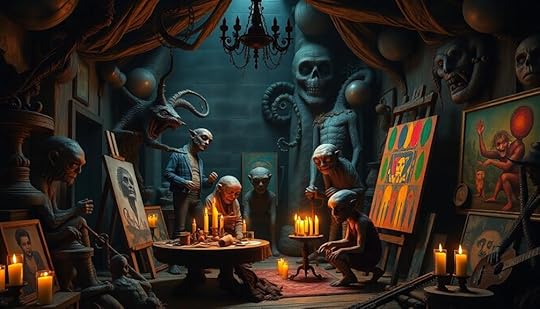
Maneuvering through the complexities of problematic artists often leads to a deeper examination of specific figures whose legacies provoke both admiration and controversy.
Take Roman Polanski, for example. He directed acclaimed films like *Rosemary's Baby*, yet his legal troubles related to sexual assault raise questions about how to view his artistic contributions.
Then there's Richard Wagner, known for his revolutionary operas but burdened by his antisemitic beliefs. This forces you to confront whether you can appreciate his music without endorsing his views.
Ernest Hemingway's literary genius is undeniable, but his troubling relationships with women clash with the admiration for his work.
Similarly, Pablo Picasso's groundbreaking art stands in stark contrast to his tumultuous personal life and alleged mistreatment of partners.
These case studies highlight the ongoing debate about engaging with art produced by flawed individuals:
Roman Polanski's Rosemary's Baby vs. his criminal pastWagner's operas vs. his antisemitic ideologiesHemingway's literature vs. his personal controversiesPicasso's art vs. his turbulent relationshipsIn these discussions, you're challenged to reconsider your relationship with art and the artists behind it.
Ethical Consumption in the Arts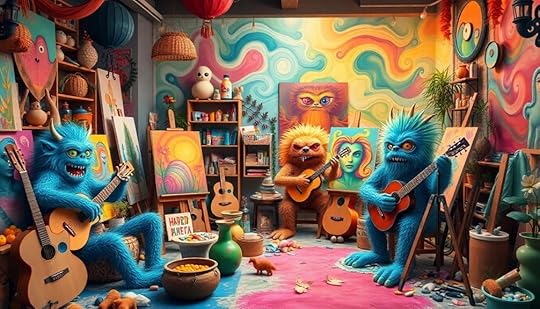
In recent years, the conversation around ethical consumption in the arts has gained significant traction as audiences grapple with the implications of supporting artists whose actions may clash with personal values.
You might find yourself torn between your desire to love the art and your moral beliefs, especially when accusations of misconduct surface.
As consumers, you're increasingly encouraged to think critically about the artists you support. Disengaging from works created by those with problematic histories can feel necessary, but it also raises questions about the complexity of ethical consumption.
What do you do with previously owned art or pieces in public spaces? These gray areas complicate your decisions.
Activism around ethical consumption has prompted many to seek alternative ways to engage with art that aligns with their values.
You may now find yourself drawn to works by artists who promote accountability and social justice. This cultural shift emphasizes the importance of nuanced discussions about the legacies of artists and the moral implications of their actions.
Balancing your appreciation for art with ethical considerations is challenging, but it's a crucial part of being a conscientious consumer in today's artistic landscape.
The Role of Criticism in Art Appreciation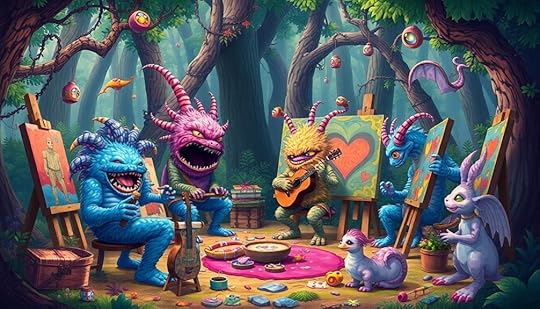
Art criticism plays a pivotal role in how you appreciate and engage with artistic works. It shapes your understanding of art by positioning the artist's biography alongside their creations.
While early 20th-century New Critics emphasized examining art independently, contemporary criticism challenges that notion, urging you to reflect on the artist's life and ethical standing. This shift invites deeper conversations about accountability in the arts.
Here are some key aspects of art criticism's role:
Autonomy vs. Context: Balancing the art's merits with the artist's background.Emotional Engagement: Acknowledging your subjective reactions while critiquing art.Ethical Implications: Contemplating the moral dimensions of the artist's actions and how they influence your appreciation.Ongoing Dialogue: Engaging with complex narratives around problematic figures in the arts.Navigating Personal Values and Art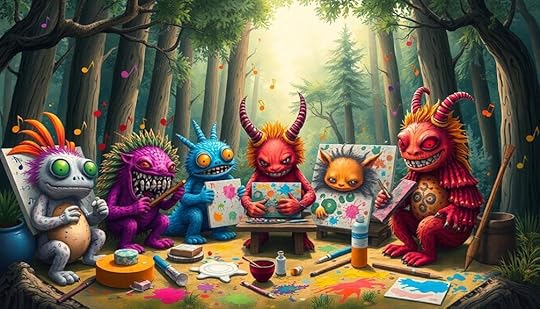
When you engage with art, you might find your personal values challenged by the artist's behavior. It's hard to separate emotional responses from the knowledge of an artist's past, especially in the wake of movements like #MeToo.
As you navigate your appreciation for their work, consider how ethical consumption plays a role in your enjoyment and support. This challenge can be reminiscent of the difficulties faced in narcissistic relationships, where emotional manipulation complicates emotional investment.
Ultimately, recognizing these patterns can help you make more informed choices about the art you choose to support.
Ethical Consumption ChallengesSteering through the complex landscape of ethical consumption in the arts challenges you to confront your values as a consumer.
You're likely grappling with the growing tension between enjoying a piece of art and holding its creator accountable for their actions. With the rise of the #MeToo movement, it's become clear that the personal behaviors of artists can greatly impact how we perceive their work.
Here are some key considerations you might find helpful:
Artist Accountability: How do you weigh an artist's misconduct against their creative contributions?Public vs. Private Consumption: Do you feel differently about engaging with art that's publicly owned versus privately produced?Support Alternatives: Are there ways to appreciate art while supporting artists whose values align with yours?Cultural Shifts: How does the broader movement toward accountability influence your choices?I've got to acknowledge that these ethical consumption challenges can be deeply personal and complex.
Finding a balance between your enjoyment of art and your moral compass isn't straightforward, but it's essential for responsible engagement in today's cultural landscape.
Emotional Responses MatterManeuvering the emotional landscape of art can be a complex journey, especially when personal values collide with the actions of artists. Your emotional responses often overshadow rational considerations, making it tough to engage with works created by problematic figures.
When you learn about an artist's negative actions, it can feel like a stain on your appreciation, permanently altering how you connect with their art. Personal experiences and historical contexts play a significant role in shaping your feelings toward these artists.
You might find yourself torn between admiring good art and grappling with the ethical implications of supporting artists whose behaviors conflict with your values. Critics argue for a more integrated approach, suggesting that understanding an artist's life and moral failings can enrich your experience rather than detract from it.
Ultimately, it's about finding balance. As you navigate this emotional terrain, consider how you can appreciate the beauty and creativity in good art while also acknowledging the complexities of the artist's life.
This approach may deepen your understanding and engagement, allowing you to appreciate art in all its multifaceted glory.
Personal Values ConflictManeuvering the intersection of personal values and art can be challenging, especially as you grapple with the actions of artists whose works you admire. The concept of "art monsters," as introduced by Jenny Offill, shows that many famed creators have prioritized their craft over ethical behavior. This creates a personal values conflict for you as a consumer.
You might find yourself wrestling with the following considerations:
The impact of the #MeToo movement on your perception of artists.The tension between artistic merit and the artist's moral character.The societal shift towards accountability and integrity.Your emotional responses to art created by problematic figures.As discussions continue to evolve, you must navigate how your personal values shape your experience with art. Engaging with works from controversial figures can complicate your enjoyment, requiring a nuanced understanding of the art's context.
Evolving Conversations on Accountability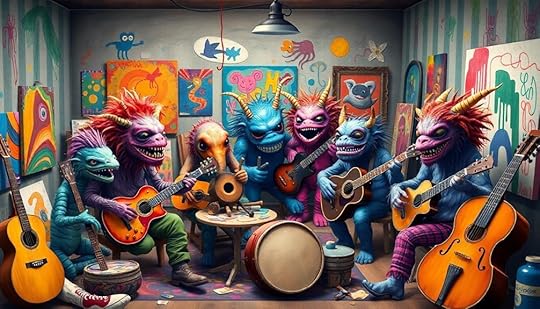
Accountability in the arts is undergoing a significant transformation, driven by increasing scrutiny of artists' behaviors and the ethical implications of their work. The #MeToo movement has sparked a cultural shift, pushing you to reconsider how an artist's personal actions affect their art and relationships with the audience.
As a result, you're likely engaging in deeper conversations about the responsibilities artists hold, balancing appreciation for their talent with the need to condemn unethical behavior. Critics and consumers alike are recognizing that emotional responses to an artist's misdeeds can complicate your experience of their work.
This ongoing dialogue challenges the romanticized view of the "tortured artist," promoting a more nuanced understanding of artistic integrity. You may find yourself drawn to artists who prioritize ethical behavior, celebrating their contributions not just for their creativity but for their character as well.
Ultimately, these evolving conversations on accountability are reshaping the artistic landscape, urging you to reflect on the importance of integrity in the creative community. As you navigate this changing terrain, your awareness of these issues will influence how you appreciate and interact with art and artists moving forward.
ConclusionIn a world where monster artists create breathtaking masterpieces, you find yourself torn between admiration and discomfort. Their genius enchants you, yet their flaws haunt the canvas. You grapple with the beauty of their work against the shadows of their actions, questioning if art can be separated from the artist. As you navigate this complex landscape, remember: each brushstroke tells a story, and every note carries a weight. Can you embrace the art while confronting the artist?
Portland’s Hidden Haunts: Ghost Stories From the City of Weird
If you're curious about Portland's hidden haunts, you're in for a spooky treat. The city is rich with ghost stories tied to its dark history. Haunted locations like the Shanghai Tunnels, Pittock Mansion, and White Eagle Saloon reveal chilling tales of former residents and eerie apparitions. Guided tours enhance the experience with personal stories and interactive elements, making history come alive. You'll hear about ghostly whispers, cold spots, and even famous figures lingering in these spaces. For more hauntingly fascinating insights on Portland's spectral side, you might want to explore further.
Key TakeawaysPortland's ghostly lore includes tales from the Shanghai Tunnels, notorious for human trafficking and ghostly whispers echoing through the underground pathways.The historic Pittock Mansion is said to be haunted by its former owners, with visitors reporting cold spots and mysterious footsteps.The White Eagle Saloon, once an opium den, is known for disembodied voices and apparitions, captivating patrons with its eerie atmosphere.The Benson Hotel features sightings of a ghostly woman in white and disturbances linked to its original owner, Simon Benson.Lone Fir Cemetery, one of Portland's oldest graveyards, is noted for mysterious orbs and spirits tied to the city's dark history and tragic past.Overview of Haunted ToursWhen you explore Portland's haunted tours, you step into a rich tapestry of ghostly lore and chilling tales. These tours, like the popular "Portland Ghosts: Poltergeists and Psychopaths" and the "Boos and Booze Haunted Pub Crawl," offer a thrilling plunge into the city's haunted past.
Lasting between 1.5 to 2 hours, you'll traverse several blocks of Old Portland, guided by knowledgeable storytellers who share enthralling ghost stories and personal encounters.
One highlight is the infamous Shanghai Tunnels, where the dark history of human trafficking and mysterious disappearances come alive. You might also visit the eerie Pittock Mansion, where whispers of the past linger in the halls, or The White Eagle Saloon, rumored to be haunted by restless spirits.
Make sure to wear comfortable shoes, as you'll be walking quite a bit. Don't forget your camera, either—it's common to capture strange phenomena during your journey.
Tours run year-round, rain or shine, so booking in advance, especially during peak seasons, is smart for the best experience. Embrace the thrill of Portland's haunted history and prepare for an unforgettable adventure!
Historical Significance of Portland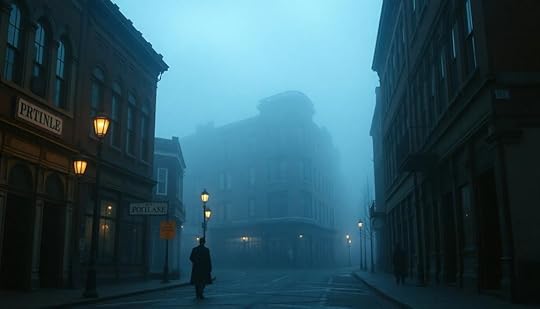
Portland's historical significance runs deep, intertwined with events that have shaped its identity and fueled its ghostly reputation. The city's history is marked by the Great Fire of 1889, which devastated much of downtown, leaving behind tales of loss that haunt the streets to this day.
As you explore, you'll find that the Oregon Trail played an essential role in Portland's growth, with countless ghost tales emerging from the experiences of early settlers.
Haunted locations, like the infamous Shanghai Tunnels, expose dark chapters of human trafficking and violent crime, which have only intensified reports of ghostly encounters. The very walls of these historic sites seem to whisper secrets of the past, as countless notable figures, from fur traders to influential residents, are believed to linger.
Structures such as the Pittock Mansion and the White Eagle Saloon further enrich Portland's haunted landscape, with each building carrying its own stories of supernatural activity.
This blend of history and the paranormal creates a unique atmosphere that invites you to investigate deeper into the city's enthralling and eerie narrative.
Must-Visit Haunted Locations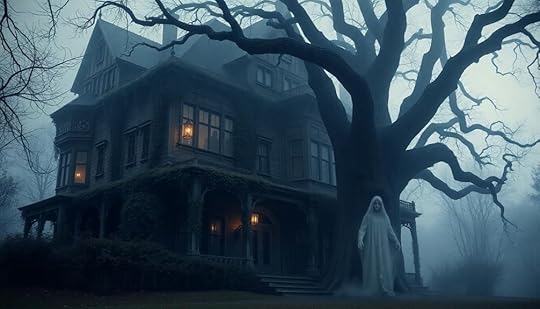
Exploring Portland's haunted landscape reveals a treasure trove of must-visit locations steeped in ghostly lore. Each spot carries its own dark history and is known for eerie presence, making them perfect for thrill-seekers and history buffs alike.
LocationDescriptionNotable HauntingsShanghai TunnelsA network of underground pathways linked to human trafficking.Ghostly apparitions and eerie sounds.Pittock MansionA historic Victorian home overlooking the city.Spirits of Henry and Georgiana Pittock.White Eagle SaloonA bar with a past as an opium den and brothel.Disembodied voices and apparitions.Benson HotelAn elegant downtown hotel with a haunted history.A woman in a white evening gown and disturbances.Lone Fir CemeteryOne of Portland's oldest graveyards with over 25,000 graves.Mysterious orbs and cold spots.These haunted places offer a chance to engage with Portland's haunted past. As you visit, keep your senses sharp; you might just encounter one of the city's ghostly apparitions.
Unique Tour Experiences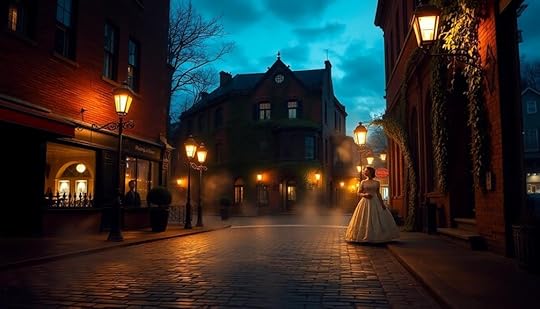
When you join a ghost tour in Portland, you're not just hearing spooky tales; you're experiencing immersive storytelling that brings the city's haunted history to life.
Guides share historical context that enriches each ghostly encounter, making the past feel present.
Plus, with interactive guest engagement, you get to ask questions and connect with the stories in a way that makes the experience truly unforgettable.
Immersive Storytelling TechniquesMany ghost tours in the city weave together immersive storytelling techniques that transport you into the eerie past. As you stroll through Portland's haunted history, knowledgeable guides share personal experiences and local folklore, bringing ghostly tales to life. The stories you hear aren't just about the supernatural; they're tied to real hauntings that reveal the city's rich and chilling narrative.
Interactive elements play an essential role in your experience. You'll have opportunities to ask questions and even share your own ghostly encounters, creating a connection with the eerie narratives presented. The use of props and flashlights adds to the atmospheric experience, allowing you to visualize the haunting tales as you traverse the shadowy streets.
These tours focus on lesser-known sites, revealing exclusive stories that deepen your understanding of Portland's supernatural legacy. The combination of enthralling storytelling and the exploration of these hidden gems creates a memorable adventure, ensuring you leave with chills and an appreciation for the city's haunted past.
With every step, you're not just a spectator; you're a part of the unfolding tale, fully immersed in the mysterious world around you.
Historical Context ExplorationDelving into Portland's ghost tours reveals a unique blend of history and haunting that captivates visitors. As you walk through the city, stories of the Shanghai Tunnels come alive, exposing the grim reality of forced labor and kidnappings that haunt Portland's streets.
These tunnels, once essential for transporting victims, now echo with ghostly whispers of the past.
You'll also encounter the Pittock Mansion, a stunning Victorian-era residence steeped in history. Visitors often recount eerie experiences tied to the former owners, making it a must-see for those intrigued by the supernatural.
The White Eagle Saloon, once an opium den and brothel, invites you to explore its lively yet haunted nightlife, where spirits of past patrons still linger.
At the Benson Hotel, you'll discover stories of Simon Benson, the original owner, whose presence adds a layer of luxury and ghostly intrigue to this elegant establishment.
Interactive Guest EngagementGhost tours in Portland offer a fascinating blend of history and interactive experiences that draw you in. These tours are designed to engage you right from the start, with interactive elements encouraging you to ask questions and share your own ghost stories. This participation enhances the immersive experience, making you feel like a part of the haunted history.
You can even rent EMF machines to detect potential paranormal activity, adding a hands-on approach to your adventure. With the thrill of possibly encountering something otherworldly, the anticipation builds as you explore the city's eerie corners.
Photography is also permitted, allowing you to capture any strange phenomena you may come across. Many guests have reported peculiar occurrences showing up in their photos, adding to the excitement.
Guides share their personal experiences and local folklore, creating a deeper connection between you and Portland's haunted past. The varying group sizes foster interaction among participants, leading to shared stories and a more engaging atmosphere.
This unique blend of guest engagement and personal involvement makes Portland's ghost tours a memorable and spine-chilling experience you won't want to miss.
Insights From Visitors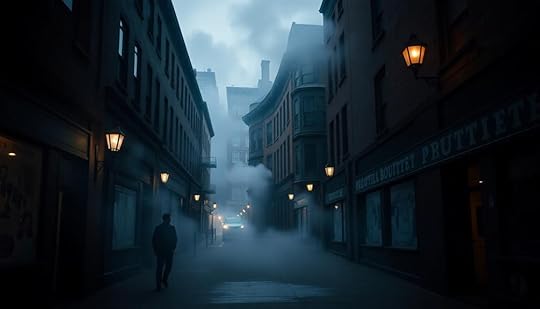
When you join a haunted tour in Portland, you'll hear memorable stories that stick with you long after the night ends.
Visitors rave about the engaging storytelling techniques that bring each ghostly tale to life, weaving in unique historical insights that connect you to the city's past.
You'll find that the combination of enchanting narratives and interactive experiences makes for an unforgettable adventure.
Memorable Tour ExperiencesMany visitors rave about their unforgettable experiences on Portland's ghost tours, where engaging storytelling brings the city's haunted history to life. Participants often highlight the unique combination of history and thrill, making their ghost-hunting adventures truly memorable.
Experience TypeVisitor FeedbackEngaging StorytellingGuides receive 5-star ratings for making history enthralling.Strange Phenomena in PhotosGuests capture eerie lights, shadows, and apparitions in their snaps.Interactive ElementsParticipants appreciate the chance to ask questions and learn more about Portland's haunted tales.Many guests enjoy renting EMF machines, enhancing their exploration of restless spirits. The interactive elements create a connection between you and the knowledgeable guides, making the experience even more enriching. With testimonials emphasizing the memorable nature of these tours, it's no surprise that many visitors express their intention to return for more eerie encounters. So, if you're seeking an adventure filled with ghostly tales and history, Portland's ghost tours promise to deliver an unforgettable experience that you'll cherish.
Engaging Storytelling TechniquesVisitors consistently highlight the enthralling storytelling techniques employed by guides during Portland's ghost tours. These engaging storytelling techniques seamlessly blend the city's haunted history with local folklore, creating an atmosphere that captivates both locals and visitors alike.
As you begin your journey, you'll find that personal anecdotes and immersive narratives bring the eerie tales to life, making each moment unforgettable.
Guests often express their delight in the interactive elements woven throughout the tours. You'll find yourself encouraged to ask questions and participate, fostering a deeper connection to the stories shared.
The guides skillfully use atmospheric props, like flashlights, to enhance the chilling ambiance, drawing you further into the haunting narrative.
Moreover, the combination of humor and chilling tales creates a unique storytelling approach that resonates with everyone. This balance keeps the experience entertaining while provoking thought about the darker aspects of Portland's past.
Essentially, these techniques not only tell a story but create an engaging experience that lingers long after the tour ends, leaving you with a profound appreciation for the city's ghostly heritage.
Unique Historical InsightsThroughout your exploration of Portland's haunted sites, you'll uncover unique historical insights that add depth to the ghostly tales. Each haunting location tells a story, often intertwined with tragic historical events that shaped the city.
Haunting LocationHistorical InsightShanghai TunnelsOnce used for human trafficking and opium trade, the tunnels' dark history creates a chilling atmosphere.White Eagle SaloonFormer opium den and brothel, it's known for ghostly apparitions and eerie disembodied voices.Lone Fir CemeteryHome to over 25,000 graves, it's a hotspot for restless spirits and mysterious orbs.Benson HotelHaunted by a ghostly woman in white and disturbances from original owner Simon Benson, it offers a glimpse into the past.These sites, rich in history and tragedy, give you an eerie sense of connection to the past while revealing the darker side of Portland. Whether it's the chilling stories from the Shanghai Tunnels or the spectral encounters at the Benson Hotel, each visit deepens your understanding of the city's hidden haunts.
Portland's Dark History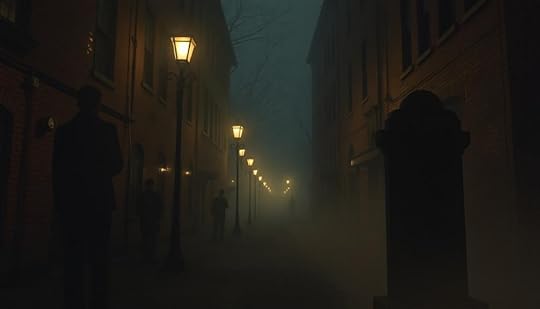
Portland's Dark History
Nestled within its vibrant streets, Portland harbors a dark history that whispers of tragedy and unrest. The Great Fire of 1889 ravaged much of the city, leaving behind scars that contribute to its haunted reputation.
The infamous Shanghai Tunnels, once a hub for human trafficking and violence, are linked to thousands of deaths. These tunnels have now become one of America's most haunted locations, where echoes of past horrors linger.
Such deep-rooted issues often emerge from unmet emotional needs in relationships, mirroring the distress caused by the city's troubled past. Racial tensions, particularly following the Chinese Exclusion Act, fueled violence in areas like Old Town, adding to the city's ghostly legends.
You can't ignore the original burial site for Native Americans, where many perished from diseases brought by settlers, further entwining Portland's dark history with sorrow and loss.
In more recent times, historical events like organized crime and the deadly fire of 1975 have left a chilling legacy. Each corner of Portland tells a story, and as you explore, you'll sense the restless spirits that roam these streets, reminding you of the city's tumultuous past and the tragedies that shaped it.
Exploring Ghostly Legends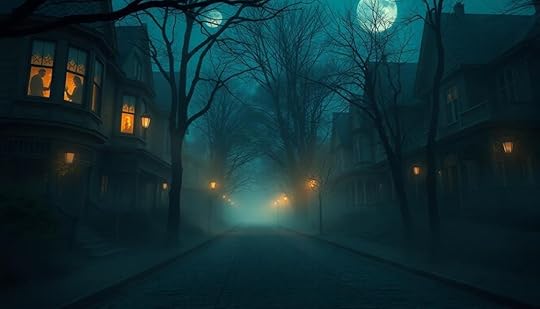
Portland's haunted history invites you to explore its ghostly legends, each rooted in the city's troubled past. One of the most infamous locations is the Shanghai Tunnels, where whispers of human trafficking linger like the chill in the air.
Ghost tours often lead curious souls through these dark passages, where sightings of ghostly apparitions and eerie sounds are reported.
The Pittock Mansion, once a grand home, now serves as a playground for paranormal enthusiasts. Visitors frequently experience strange cold spots and the sound of footsteps echoing through the halls, believed to be the spirits of Henry and Georgiana Pittock.
At the White Eagle Saloon, patrons have shared tales of disembodied voices and sightings of apparitions, particularly in the hotel rooms above, remnants of its past as an opium den and brothel.
And don't forget the Benson Hotel, where the ghost of Simon Benson is known for causing flickering lights and knocks on doors.
Frequently Asked QuestionsIs Multnomah Falls Haunted?You might find Multnomah Falls haunted, as many visitors report cold spots and eerie sounds. The legend of Luisa, a tragic spirit, adds to the allure, making your visit both enchanting and possibly ghostly.
ConclusionAs you wander through Portland's streets, the echoes of laughter intertwine with whispers of the past, creating a haunting melody that lingers in the air. The city's vibrant life contrasts sharply with its shadowy tales, reminding you that every corner holds a story waiting to be told. Whether you're drawn to the thrill of the unknown or the allure of history, Portland's hidden haunts invite you to explore the beauty and darkness that coexist in this enchanting city.
November 13, 2024
What if Monsters Play Sports and Games in Their Communities
If monsters played sports and games in their communities, you'd witness amazing feats of strength and creativity. Imagine teams mixing various monster abilities to create unforgettable matchups. The chaos of games like Mutant Football League would keep everyone on their toes, filled with laughter and friendly rivalries. Local businesses would sponsor events, fostering community spirit while enhancing game experiences. Spectators would enjoy outrageous gameplay, blending humor with athleticism. You'd see camaraderie bloom as different monsters come together, proving that sports can bridge gaps. Uncover the deeper implications of this scenario and discover how monster sports influence culture.
Key TakeawaysMonsters participating in sports would foster inclusivity, attracting diverse community members and enhancing local spirit.Unique monster abilities would create exciting and unpredictable gameplay, ensuring every match is entertaining and memorable.Community sports events could serve as fundraising opportunities for local organizations, strengthening community ties through engagement and sponsorship.Rivalries among monster teams would amplify excitement, fostering teamwork and strategic adaptation in intense competitions.The cultural impact of monster sports would merge humor and horror, creating a niche gaming experience that resonates with fans and encourages community involvement.Community Sports Events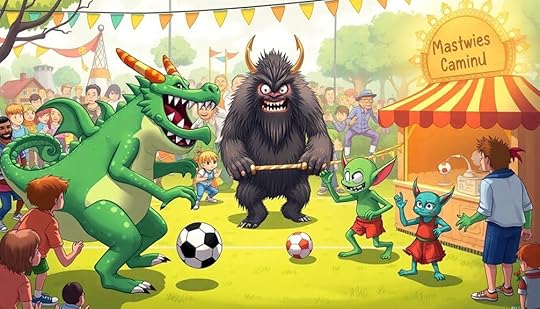
Community sports events featuring monsters can be a fantastic way to bring people together from all walks of life. These gatherings foster inclusivity, allowing everyone to participate, whether they're seasoned athletes or newcomers to physical fitness.
You'll find that teamwork is at the heart of these monster-themed activities, as participants collaborate to conquer obstacle courses or engage in friendly competitions.
Local organizations and schools often host these exciting events, turning them into opportunities for fundraising. Through ticket sales and concession stands, you can help raise money for community projects while enjoying a day filled with fun.
Engaging local businesses as sponsors not only enhances the event but also strengthens community ties, creating a supportive atmosphere for all.
Moreover, these sports events serve as platforms for educational initiatives, promoting sportsmanship and respect among participants.
With creative costume contests and themed games, you'll experience a blend of traditional sports and imaginative flair.
Unique Monster Abilities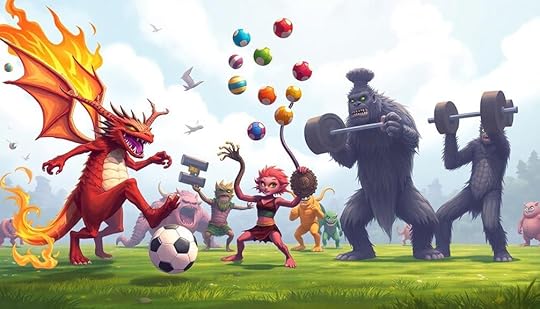
Unique monster abilities add an exciting layer to sports games, transforming ordinary gameplay into extraordinary experiences. With their super strength, speed, and agility, monsters pull off exaggerated feats that leave human players in the dust. Characters like Bomb Shady and Nuke Freakly not only showcase unique abilities but also bring humor to the field, making every match a comedy show.
These abilities enhance chaotic gameplay mechanics, allowing players to use weapons or traps from their environment. This unpredictability can turn a losing game into a spectacular victory. Additionally, team composition plays a significant role in strategizing for success. You can mix and match monster characters to create a balanced team that exploits your opponents' weaknesses effectively.
Monster NameUnique AbilityExaggerated FeatBomb ShadyExplosive attacksDestroys obstacles with easeNuke FreaklyInvisibilitySneaks past defendersSpeedy SlimeSuper speedOutruns everyone on the fieldRegenerate RexHealth regenerationRecovers during gameplayThese abilities not only amplify the fun but also guarantee that every game is a memorable spectacle filled with laughter and excitement.
Popular Games Among Monsters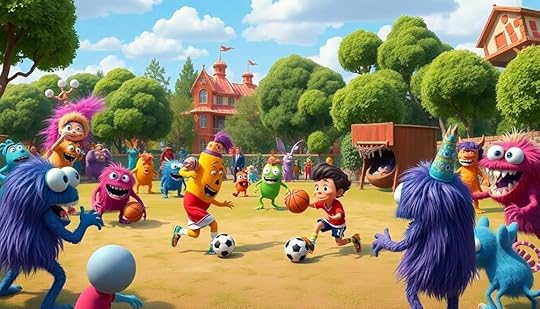
Monsters frequently gather to enjoy a variety of chaotic sports games that mirror the wildness of traditional sports with a hilarious twist. One of the most popular games is the Mutant Football League, where exaggerated violence and humor reign supreme. This game, inspired by the classic Mutant League Football, showcases teams with pun-inspired names and unique abilities. Here, you'll find characters like Bones Jackson and Razor Kidd, adding to the excitement with their quirky antics.
In these sports games, teamwork and strategy are essential as players navigate through league corruption and fierce competition. The gameplay mechanics keep things action-packed, ensuring no two matches are ever the same.
But it doesn't stop at football; monsters also immerse themselves in Mutant League Hockey. This game incorporates outrageous elements, like bodies appearing under the ice, making every match a spectacle of hilarity.
Community events and tournaments highlight these monster-themed sports, fostering camaraderie and friendly competition among participants. Whether you're rooting for your favorite team or joining in the fun, these games create an unforgettable experience that brings monsters together, showcasing their love for chaos and laughter.
Team Dynamics and Rivalries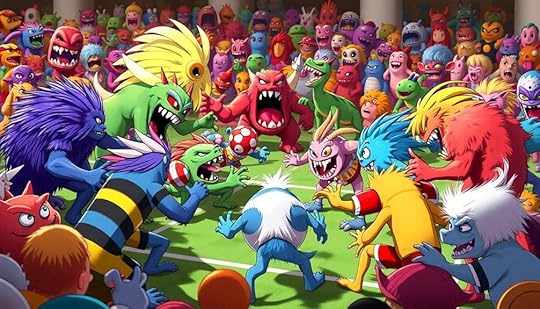
When it comes to team dynamics in monster sports, collaboration often takes center stage. Players like Bones Justice and Razor Kidd exemplify camaraderie, strategizing together to navigate the challenges of the Mutant Football League. The chemistry among teammates is essential for success, especially when rivalries come into play.
AspectDescriptionRivalriesIntense matchups, like the Midway Monsters vs. Slay City Slayers, fuel excitement.Community EngagementFan support shapes team identities and enhances rivalries.StrategyPlayers must adapt tactics in high-stakes situations.ChampionshipsTournament settings amplify rivalries, creating unforgettable moments.These rivalries, driven by competitive spirit and personal stakes, reflect exaggerated sports archetypes. In the chaotic world of monster sports, unexpected alliances and betrayals can emerge, making strategy a significant component. Community engagement is key, as fans contribute to the narrative, influencing team dynamics and outcomes. Ultimately, the relationship between camaraderie and rivalry not only shapes gameplay but also enriches the overall experience for players and fans alike.
Cultural Impact of Monster Sports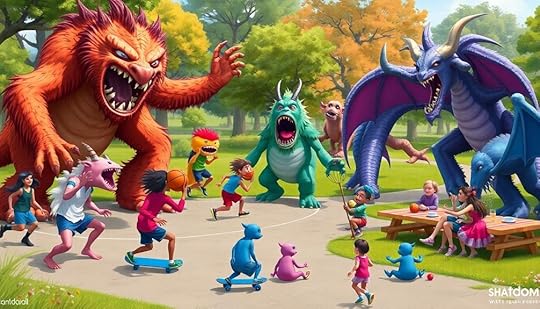
The vibrant world of monster sports has carved out a distinct niche in gaming culture, merging humor with horror to create memorable experiences. Titles like Mutant League Football not only entertain but also provide sharp commentary on societal themes, parodying traditional sports. You'll find exaggerated character designs and absurd gameplay mechanics that reflect issues like corporate greed and athlete egos. This cultural impact resonates deeply, allowing players to laugh at the over-the-top scenarios and character names featured in games like Mutant Football League.
Additionally, much like the principles of the Law of Attraction that emphasize positive experiences, these games invite players to engage with their creativity and humor.
The success of monster sports has sparked a wave of merchandise, animated series, and a dedicated fanbase, showcasing their lasting appeal and nostalgia for 90s gaming experiences. Engaging with the community through character design and gameplay feedback fosters a strong sense of ownership among fans, making them feel integral to the culture surrounding these games.
Moreover, the blend of horror and sports in titles like Mutant League Football has paved the way for future game developers, encouraging them to explore unconventional themes and humorous takes on competitive sports. This expansion enriches the genre, ensuring its relevance in an ever-evolving gaming landscape.
ConclusionIn the end, imagining monsters playing sports adds a whimsical twist to community life. Did you know that 68% of teens believe sports foster friendships, regardless of background? When these unique beings compete, their extraordinary abilities and team dynamics create an engaging atmosphere, strengthening bonds and rivalries alike. As monster sports become a cultural phenomenon, they not only entertain but also bridge gaps between diverse communities, reminding us that play is a universal language we all share.
The Dark Side of Chicago: Hauntings and Legends You Won’t Believe
Chicago's dark side is full of jaw-dropping hauntings and legends that'll send shivers down your spine. You'll encounter ghostly figures near the Chicago River and hear tales of the Lady in Red haunting the Drake Hotel. The Congress Plaza Hotel's Room 441 is infamous for its spooky apparitions, while eerie laughter echoes from the Second Regiment Armory. The Eastland Disaster left a chilling legacy of spirits tied to its tragic past. With dark tourism thriving, guides passionately share these gripping stories. Stick around, and you'll uncover even more spine-tingling tales waiting to haunt your imagination.
Key TakeawaysChicago's dark tourism thrives on its infamous events, like the Eastland Disaster, which contributed to numerous ghost stories and sightings.Haunted locations include the Congress Plaza Hotel and Drake Hotel, both known for ghostly apparitions linked to tragic pasts.The Second Regiment Armory and Biograph Theater are hotspots for ghostly encounters, echoing the city's gangster history.Tours often recount chilling tales, with visitors experiencing flickering lights and unexplained noises during their ghostly explorations.Urban legends, such as those surrounding Al Capone, reflect the city's rich historical backdrop intertwined with supernatural folklore.Dark Tourism in ChicagoDark tourism in Chicago has become incredibly popular, drawing countless visitors enthusiastic to explore the city's haunting history and infamous tales. As you stroll through the streets, you'll uncover stories of historical tragedies and notorious characters, with tours that take you through key sites linked to gang violence and ghostly encounters.
A two-hour walking tour covers about 1.5 miles, starting on the north end of the Magnificent Mile and wrapping up near the Chicago River. You'll visit haunted buildings and gangster hotspots, immersing yourself in the rich tapestry of the city's dark past.
Whether you're part of a small group or a larger gathering, private bookings allow for customization, ensuring the experience matches your interests. Tours run rain or shine, so dress appropriately for the weather since most of the journey is outdoors, though you'll typically step into at least one building along the way.
Significant events highlighted include the Haymarket Affair, the Iroquois Fire, and the Eastland Disaster, all showcasing Chicago's haunted history and the profound impact these events had on local culture. Embrace the thrill of dark tourism and discover the eerie stories that lie beneath the surface.
Notorious Hauntings and Legends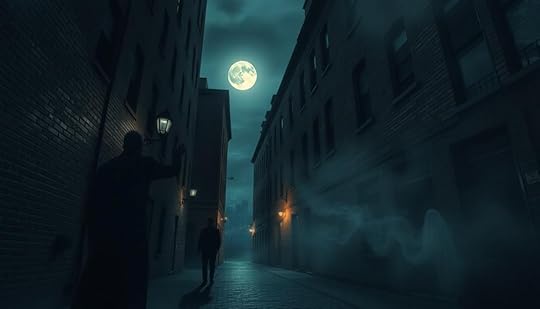
Then there's the Eastland Disaster, where 844 lives were tragically lost.
Ghostly faces have been spotted in the Chicago River, and shadowy figures are often seen near former morgue sites, leaving an unsettling legacy.
The Drake Hotel adds to the chilling narrative with its own ghostly residents.
The "Lady in Red" is said to haunt the 10th floor, while the "Lady in Black" is linked to the unsolved murder of Adele Born Williams.
Iconic Haunted Locations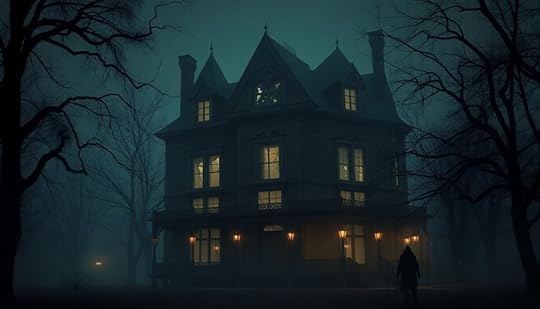
In the heart of Chicago, several iconic haunted locations draw both thrill-seekers and history buffs alike. One standout is the Congress Plaza Hotel, built for the 1893 World's Fair. Here, Room 441 is notorious for ghost stories involving infamous figures like Al Capone and H.H. Holmes. Guests frequently report strange occurrences, adding to the hotel's eerie charm.
Another haunted gem is the Drake Hotel, known for the Lady in Red. After a tragic suicide during its inaugural gala, her spirit is said to wander the 10th floor, enchanting visitors and staff alike.
The Reid Murdoch & Co. Building also holds its share of ghostly tales, with employees experiencing shadowy figures and unexplained noises, remnants of its past as a makeshift morgue.
The Second Regiment Armory, once the primary morgue for Eastland victims, is rumored to echo with ghostly children's laughter, enhancing its unsettling atmosphere.
The Eastland Disaster
When you think about the Eastland Disaster, it's hard to ignore the chilling eyewitness accounts of hauntings that linger in the area.
Survivors and local residents have reported eerie sights and sounds, making the tragedy's legacy even more compelling.
As you explore this haunted history, you'll discover how the disaster continues to echo through the lives of those it affected.
Eyewitness Accounts of HauntingsAlthough the Eastland Disaster occurred over a century ago, eyewitness accounts of hauntings in the area continue to evoke chilling memories. You might hear whispers of ghostly figures emerging from the Chicago River, their faces and hands seen by patrons dining in nearby restaurants.
These sightings create a haunting connection to the tragic event, as witnesses report shadowy figures lurking near the disaster site. In the aftermath of the catastrophe, police responded to numerous reports of drowning individuals, yet no bodies were found, deepening the mystery surrounding these spectral encounters.
Many claim to have experienced unexplained noises, like flickering lights and slamming doors, in buildings associated with the disaster. The eerie atmosphere only intensifies as you hear tales from those who've felt an otherworldly presence.
The 100th anniversary of the Eastland Disaster drew countless paranormal investigators, enthusiastic to uncover the truth behind these hauntings. As you explore this haunted locale, you can't help but feel the weight of history and the lingering spirits that refuse to fade away, making it a chilling reflection of the tragedy that unfolded so long ago.
Legacy of the DisasterThe Eastland Disaster's legacy is a haunting reminder of the fragility of life and the consequences of negligence. On July 24, 1915, the SS Eastland tipped over while still docked, claiming 844 lives, including entire families. This tragedy, fueled by severe overcrowding, left a scar on Chicago's history.
As you explore the area today, stories of ghostly sightings linger. Eyewitness accounts recount faces and hands emerging from the waters of the Chicago River, alongside shadowy figures near the disaster site, solidifying its haunted reputation.
Landmarks like the Reid Murdoch & Co. Building, which served as makeshift morgues, are now known for their paranormal activity. Visitors report flickering lights and strange noises, suggesting that the spirits of the victims still roam.
Even a century later, the legacy of the Eastland Disaster resonates deeply, prompting numerous paranormal investigations at key sites connected to the event. Each year, as the anniversary approaches, you can't help but feel the weight of those lost lives.
The echoes of the past remind you that some tragedies never truly fade, leaving behind a haunting presence that still captivates and terrifies.
Ghostly Encounters at Hotels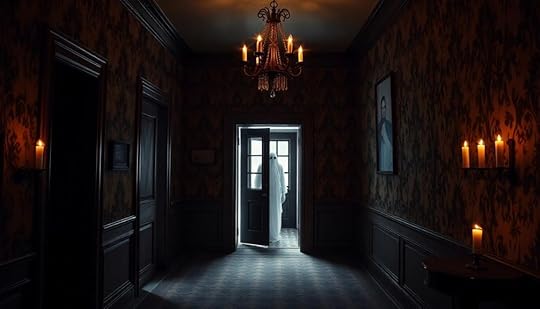
Chicago's hotels are not just places to stay; they're gateways to ghostly encounters that linger in the shadows of history. If you're a thrill-seeker or a skeptic, consider these haunted hotels on your next ghost tour.
Hotel NameNotable Ghostly EncounterYear EstablishedCongress Plaza HotelGhost sightings, especially in Room 4411893Drake HotelThe Lady in Red, haunting the 10th floor1920Reid Murdoch & Co. BuildingShadowy figures and strange sounds1914The Congress Plaza Hotel, built for the 1893 World's Fair, is notorious for eerie sightings. Room 441, known for its ghostly inhabitant, is only bookable upon request. Over at the Drake Hotel, the tragic story of the Lady in Red adds to its haunted reputation, with many claiming to see her wandering the halls. Meanwhile, the Reid Murdoch & Co. Building, once a morgue during the Eastland Disaster, echoes with unsettling sounds. These haunted hotels offer a glimpse into Chicago's dark past, where every corner tells a chilling tale.
Gangster History and Hauntings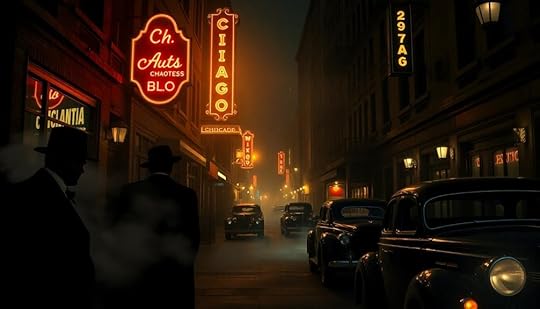
Diving into Chicago's gangster history reveals a chilling tapestry of crime and hauntings that still echo through the city. The notorious figures like Al Capone and the bloody events, such as the St. Valentine's Day Massacre, have left an indelible mark on Chicago's landscape.
As you explore, imagine:
Ghostly apparitions of victims roaming the streets where they met their fate.The eerie whispers of children's laughter echoing from the Second Regiment Armory, a former morgue for Eastland victims.Shadowy figures in the Congress Plaza Hotel, where H.H. Holmes once lurked.The Biograph Theater, forever haunted by the ghost of John Dillinger, whose dramatic end unfolded before startled eyes.These locations serve as reminders of the violent past intertwined with the city's haunted lore.
Each corner of Chicago holds stories of both the living and the dead, revealing how the gangster history continues to influence the present. The spirits of those who fell victim to crime linger, reminding you of the price paid for power and greed.
In this city, the lines between history and hauntings blur, making every visit a potential encounter with the supernatural.
The Paranormal Investigation Scene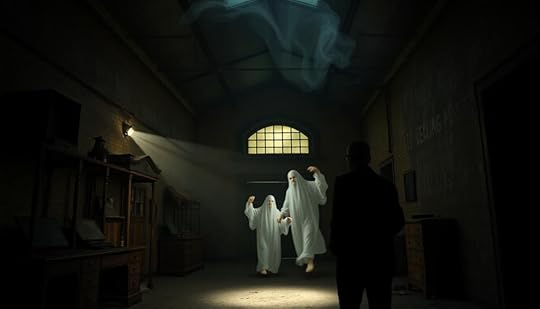
As interest in the paranormal scene heats up, Chicago's haunted history attracts a growing number of investigators keen to uncover the secrets hidden within its storied sites.
The 100th anniversary of the Eastland Disaster sparked a surge in paranormal investigations at key locations, where investigators have captured eerie responses related to this tragic event. Using special recording devices, they've even documented ghostly communications in Czech, a proof of the immigrant workforce affected by the disaster.
Hotspots like the Reid Murdoch & Co. Building, once a makeshift morgue for Eastland victims, now buzz with reports of shadowy figures and unsettling sounds.
Similarly, the Second Regiment Armory, the primary morgue during the tragedy, is infamous for its haunting experiences, including ghostly children's voices and unexplained noises that staff can't ignore.
This cultural fascination with ghost stories and tragic events has created a vibrant paranormal investigation scene in Chicago.
Many locations offer dedicated tours, inviting you to explore their haunted histories and experience the thrill of uncovering the stories that linger on.
Immerse yourself in this enthralling world and witness firsthand the echoes of the past.
Visitor Experiences and Testimonials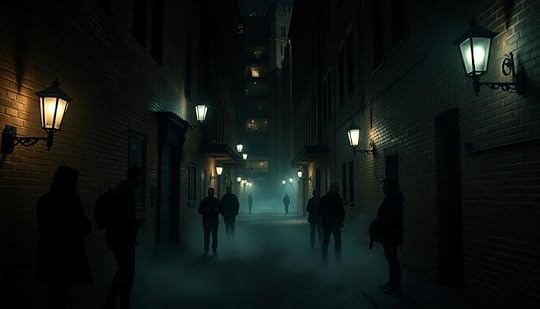
When you take a dark tourism tour in Chicago, you'll likely hear enthralling ghost stories that stick with you long after the experience.
Many visitors share memorable encounters with the city's haunted past, often highlighting the passion of their guides.
These engaging narratives not only entertain but also educate, making your journey through Chicago's eerie history unforgettable.
Memorable Tour EncountersVisitors often share unforgettable encounters on Chicago's haunted tours, where passionate guides bring the city's eerie history to life. You'll find yourself immersed in tales of infamous figures like H.H. Holmes and Al Capone, adding depth to your understanding of the darker past.
Many participants report engaging interactions that enhance the overall experience of exploring Chicago's haunted history.
Picture this during your tour:
Flickering lights casting ghostly shadows on brick walls.Echoes of unexplained footsteps in the Reid Murdoch & Co. Building.The chilling sensation of being watched as you walk through haunted alleyways.The thrill of hearing enchanting stories that blur the lines between fact and legend.These memorable tour encounters often leave guests spellbound, enthusiastic to share their experiences. You'll appreciate the blend of historical education and entertainment, learning about notorious events while soaking in the spooky ambiance.
Plus, the flexible scheduling options guarantee that you can join the adventure, no matter your plans. With each haunting tale, you'll feel the pulse of Chicago's haunted history, making your visit truly unforgettable.
Unique Ghost StoriesMystery surrounds the unique ghost stories that emerge from Chicago's haunted locations, each one adding a layer of intrigue to the city's spectral narrative.
Take Room 441 at the Congress Plaza Hotel, for instance. Visitors report experiences that range from peaceful nights to unsettling encounters, solidifying its reputation as one of America's most haunted rooms.
At The Drake Hotel, many guests share chilling stories of the Lady in Red, a spirit associated with a tragic suicide during the hotel's opening gala.
Meanwhile, staff at the Second Regiment Armory speak of ghostly children's cries and unexplained noises, echoing the site's dark past as a morgue for Eastland disaster victims.
In the Reid Murdoch & Co. Building, flickering lights seem to react to ghost tour commentary, deepening its haunted lore.
And then there's the Red Lion Pub, where patrons recount encounters with spirits tied to Chicago's mobster history.
These unique stories weave a complex tapestry of the supernatural, inviting you to explore the city's haunted heritage while wondering what spectral secrets linger just beyond your sight.
Engaging Guide ExperiencesStepping into one of Chicago's ghost tours, you'll quickly notice the engaging energy radiating from the passionate guides who lead the way. Their enthusiasm isn't just infectious; it transforms your experience into an enthralling journey through the city's haunted locations.
Each guide weaves together intriguing historical context and ghostly narratives, ensuring you're not just a spectator but part of the tale.
As you stroll through the dimly lit streets, you might encounter:
Eerie whispers echoing from abandoned asylumsShadows darting across the cobblestones of ancient cult sitesChilling tales that send shivers down your spineLively anecdotes that keep the mood fun and engagingVisitors rave about these engaging guide experiences, noting how they consistently create a memorable atmosphere filled with excitement.
Flexible booking options make it easy to join in on the fun, whether you're a local or a tourist. Some guests report spine-tingling encounters with the paranormal, while others simply relish the ambiance.
With ticket prices ranging from $25 to $75, exploring Chicago's haunted history has never been more accessible. Don't miss your chance to experience the thrill!
Planning Your Ghost Tour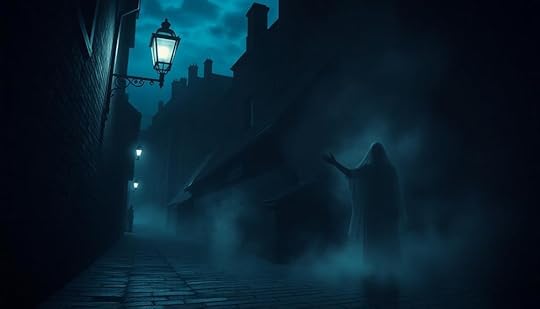
When you're ready to plan your ghost tour in Chicago, you'll find an exciting mix of history and hauntings awaits you. Most ghost tours last about two hours and cover roughly 1.5 miles on foot, allowing you to fully immerse yourself in the Dark Side of the city.
You can customize your experience, as private group bookings accommodate anywhere from 1 to over 50 participants. This flexibility lets you tailor the content based on your group's interests.
Tours operate rain or shine, so be sure to dress appropriately for the weather, as much of the adventure takes place outdoors. Whether you're exploring haunted locations or listening to spine-chilling stories, the experience promises to be engaging and memorable.
To enhance your visit further, many tours offer a special discount code for the Medieval Torture Museum, giving you extra value after your ghostly journey.
Plus, with flexible scheduling throughout the week based on guide availability, you'll find it easy to book a tour that fits your schedule. Get ready to plunge into the eerie tales that make Chicago a hotspot for ghost enthusiasts!
Cultural Impact of Hauntings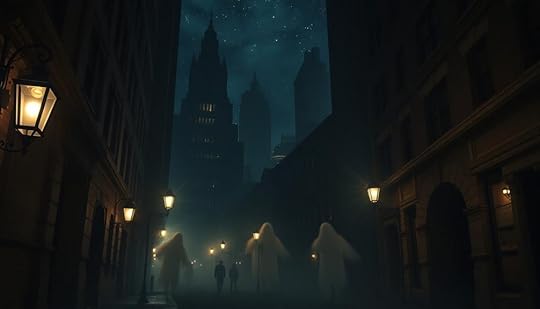
Chicago's rich tapestry of hauntings captivates countless visitors, drawing them into a world where history and the supernatural intertwine. The city's tragic past and chilling legends fuel a fascination with dark tourism, enticing you to explore its ghostly lore through thrilling tours and haunted sites.
The eerie echoes of the Eastland Disaster linger in the air.Shadows of notorious figures like H.H. Holmes and Al Capone haunt the streets.The Congress Plaza Hotel and The Drake Hotel host countless spectral encounters.Architectural wonders, like the Reid Murdoch & Co. Building, weave ghostly stories into their design.The cultural impact of these hauntings is profound. Themed tours not only educate you about Chicago's darker history but also foster a sense of community as you share spine-tingling tales with fellow explorers.
Whether you're drawn to the tragic stories or the thrill of potential ghostly encounters, you can't help but feel the weight of the past in every haunted corner. In this way, hauntings enrich the cultural fabric of Chicago, making it a unique destination for those seeking both knowledge and adventure.
Frequently Asked QuestionsWho Is the Most Famous Ghost in Chicago?You'll find that the most famous ghost in Chicago is the "Lady in Red." She haunts the Drake Hotel, particularly the 10th floor, due to her tragic past from the hotel's opening gala in 1920.
Why Is the Drake Hotel Haunted?The Drake Hotel's haunted reputation stems from tragic events, like the suicides and murders of its guests. You might encounter the "Lady in Red" or the "Lady in Black" roaming its eerie halls.
What Is the Ghost Story in Illinois?Illinois is rich with ghost stories, from haunted hotels to tragic sites. You'll hear about the Lady in Red, shadowy figures by the Chicago River, and eerie children at the Second Regiment Armory.
Who Was Resurrection Mary Chicago?When it comes to ghost stories, legends often hold a grain of truth. Resurrection Mary, a tragic spirit in Chicago, is said to haunt Archer Avenue, hitchhiking in her white dress before mysteriously vanishing from cars.
ConclusionAs you wander through Chicago's haunted streets, remember that each ghostly tale is like a faded photograph—capturing moments of sorrow, loss, and mystery that linger in the air. Just as a photograph reveals the essence of its subject, these legends disclose the city's hidden history. By embracing the spookiness, you're not just a visitor; you're a part of the ongoing story, connecting the past to the present with every chilling encounter. So, dare to explore—you might just uncover your own ghostly tale.
Bodie: The California Ghost Town Frozen in Time and Full of Spirits
Bodie is a enchanting California ghost town that froze in time after a gold rush boom in the late 1800s. Once home to 10,000 residents, it now showcases around 100 preserved buildings from its prosperous days. You'll feel the lingering spirits of miners and families who lived there, as stories of ghosts and cursed artifacts add to its eerie charm. Designated as a Historic Park, Bodie offers a glimpse into the vibrant yet tumultuous life of a mining community. Explore its intriguing legends and maybe catch a ghostly glimpse if you're lucky; there's so much more to uncover.
Key TakeawaysBodie, founded in 1859, thrived during the gold rush, peaking at 10,000 residents before declining to a ghost town by the 1940s.The town's preservation as a California State Historic Park in 1962 showcases approximately 100 original structures from the late 19th century.Bodie's vibrant yet dangerous past included 65 saloons, contributing to a culture marked by lawlessness, violence, and diverse community dynamics.Haunting stories, including cursed artifacts and ghostly legends, enhance Bodie's allure, attracting visitors intrigued by its supernatural reputation.The Bodie Foundation actively protects the site from vandalism while educating visitors about its historical and cultural significance.Historical Overview of BodieBodie, nestled in the Sierra Nevada mountains, sprang to life in 1859 when William S. Bodey discovered gold. This discovery triggered a surge of prospectors and settlers, and soon Bodie became a bustling mining town.
By the late 1870s, the population swelled to about 10,000, with around 2,000 buildings, rivaling even Sacramento in size. The Gold Rush transformed Bodie into a thriving community, where fortunes were made and lost, and everyday life was marked by the boom-and-bust cycle of mining.
During its peak, Bodie's mining operations yielded an estimated $70 million in gold between 1876 and 1941, underscoring its economic importance.
However, as gold became harder to find, the town's prosperity dwindled, leading to significant decline by the early 1940s. Eventually, Bodie was abandoned, leaving behind a ghost town that now serves as a window into the past.
Designated as a California State Historic Park in 1962, Bodie is preserved in a state of "arrested decay."
When you visit, you can step back in time, experiencing the unique spirit of this once-thriving town and the challenges faced by its residents during the Gold Rush era.
Mining Boom and Economic Impact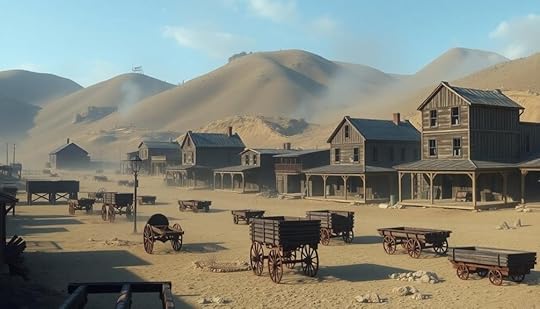
The mining boom in Bodie ignited in June 1878 when the first syndicate began extracting rich gold ore, setting off a wave of excitement and opportunity. The allure of gold drew in prospectors, and soon the town's population skyrocketed. By 1880, approximately 10,000 people inhabited Bodie, all chasing their dreams of wealth in this flourishing mining hub.
Bodie's mines produced gold at an astonishing rate, yielding $600 worth of gold per ton of rock, far surpassing the $40 per ton typical in other California mines. This economic prosperity attracted more miners and their families, creating a bustling community.
However, the mining operations were perilous, with numerous injuries and fatalities highlighting the harsh realities faced by workers.
Despite the initial wealth and growth, the gold strike was short-lived. By 1882, the mines' output began to dwindle, leading to a swift decline in both economic activity and population.
As the gold became scarce, so did the dreams of many who'd flocked to Bodie, ultimately leaving it a ghost town with remnants of its once-thriving mining past.
Cultural Significance and Community Life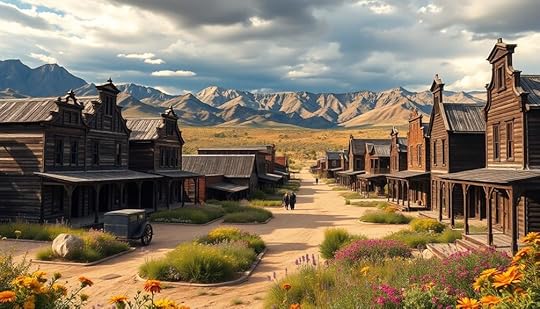
In Bodie, you'd experience a unique blend of lawlessness and community life that shaped its cultural identity.
The diverse population, ranging from miners to outlaws, created a vibrant yet dangerous environment, often highlighted by the notorious "Shooters Town" reputation.
Over time, as families began to settle, the social dynamics shifted, reflecting a change from chaos to a more structured community.
Lawlessness and ViolenceEmerging from the shadows of California's mining boom, Bodie's reputation for lawlessness and violence painted a vivid picture of community life. With a staggering peak of 65 saloons and numerous brothels, the nightlife was vibrant but perilous. The town earned the nickname "Shooters Town" due to the frequent violent incidents, often reported in local newspapers as nightly deaths from bar fights.
Alcohol consumption surged among miners, leading to escalated violence and a reckless culture that defined daily existence. Gambling halls thrived in this chaotic atmosphere, attracting both thrill-seekers and outlaws. The diverse population, including many immigrants, added to Bodie's tumultuous environment, emphasizing survival in a harsh mining landscape.
Here's a quick overview of the lawlessness and violence in Bodie:
AspectDescriptionSaloons & Brothels65 saloons and numerous brothels fueled nightlifeViolenceFrequent bar fights led to nightly deathsGambling CultureGambling halls thrived amid chaos and recklessnessThe legacy of lawmen and outlaws continues to intrigue visitors, making Bodie a fascinating study of survival and conflict.
Diverse Community DynamicsBodie's vibrant and chaotic atmosphere wasn't just defined by its lawlessness; it also thrived on a rich tapestry of diverse cultures. At its peak in the early 1880s, the population soared to around 10,000, comprised of miners, their families, and a colorful mix of immigrants. This diverse community dynamics created a multicultural melting pot, reflective of the broader Gold Rush era in California.
The town featured a bustling nightlife with approximately 65 saloons, brothels, and gambling halls, earning it the notorious nickname "Shooters Town." Despite the frequent violence and nightly fatalities reported in local newspapers, the community continued to flourish.
Bodie's Chinatown and various ethnic groups contributed unique traditions that enriched daily life in the mining town.
As the initial mining boom began to wane in the 1890s, Bodie started to shift towards a more family-oriented community. Essential services like schools and churches emerged, indicating that even in this rough environment, residents sought stability and a sense of belonging.
Bodie's diverse cultural landscape shaped its legacy, illustrating the complexities of life in a historic California mining town.
Decline and Abandonment of Bodie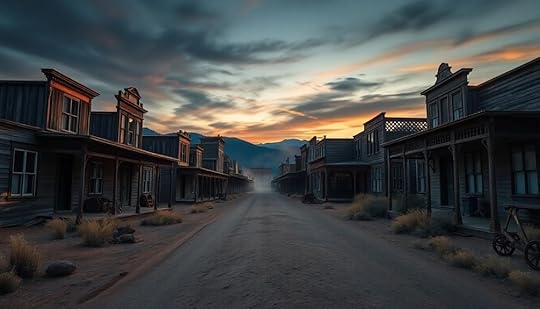
As gold resources dwindled in the late 1880s, miners flocked away from Bodie, searching for new opportunities in emerging boomtowns. The decline of this once-thriving community became evident as the Lynch Shaft, which had reached 1200 feet by 1882, indicated that lucrative gold strikes were exhausted.
With the mining boom fading, Bodie's population of 10,000 in 1880 plummeted to fewer than 200 by the time it was designated a state historic park in 1962.
Businesses began closing their doors, and the heartbeat of the town slowed. As mining operations ceased by the 1940s, Bodie transformed into a ghost town, left largely abandoned and frozen in time.
Only about 100 structures remained, a stark reminder of the vibrant life that once filled the streets. The echoes of the past lingered in the empty buildings, where the spirit of miners and their families could still be felt, whispering stories of hope and hardship.
Bodie's decline and abandonment illustrate the harsh reality of boomtowns, where fortunes can vanish as quickly as they appear. What once thrived now stands as a haunting reminder to time's relentless march.
Preservation Efforts and State Park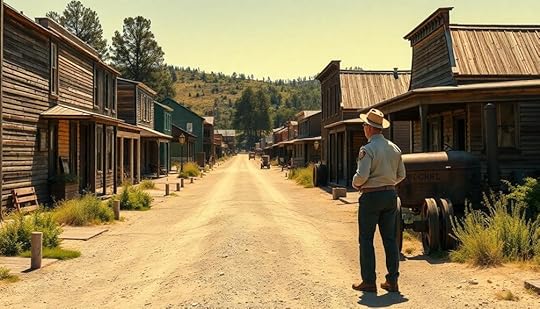
Since its designation as a California State Historic Park in 1962, efforts have focused on preserving Bodie's historical significance and its original structures in a state of "arrested decay."
The Bodie Foundation plays an essential role in these preservation initiatives, working tirelessly to protect the site from vandalism while ensuring that it remains true to its 19th-century roots.
You'll find approximately 100 of the original structures intact from Bodie's peak of nearly 2,000 buildings, allowing you to experience a snapshot of life in the 19th century.
Here are some key aspects of the preservation efforts:
Stabilization of structures to prevent further deteriorationProtection against vandalism and natural wearMaintenance of the site's historical integrityEducational programs to raise awareness about Bodie's historyCollaboration with local organizations to promote preservationDespite ongoing challenges from weathering, the Bodie State Historic Park remains a reflection of the past, with no restoration work done.
This approach allows you to appreciate the authentic historical condition of the town, making your visit a unique journey into the remnants of a once-thriving mining community.
Architectural Features of Bodie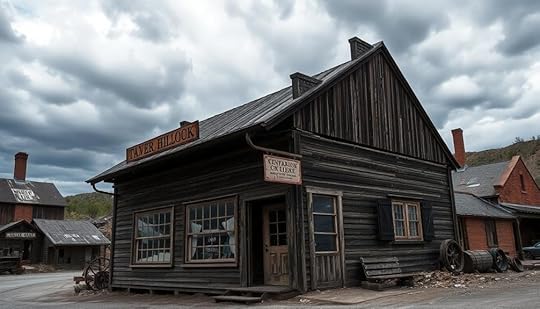
Preservation efforts have allowed you to explore the architectural features that define Bodie and reflect its rich history. As you wander through the ghost town, you'll encounter approximately 100 extant structures that stand as a representation of the late 19th-century mining boom.
The architectural designs vary widely, showcasing the diverse backgrounds of the miners and residents who once called Bodie home. Key buildings like the Methodist Church, the general store, and the schoolhouse offer a glimpse into the town's social fabric.
The mortician's building adds a somber note to the historical narrative, reminding you of the realities of life in a mining town. Don't miss the Standard Mill, built in 1899, which remains a focal point of Bodie's industrial heritage, though it's accessible only through guided tours.
Many residential areas, untouched by fire, reveal the living conditions of Bodie's past inhabitants. Each structure, with its unique style and materials, tells a story of the community that thrived here.
Folklore and Legends of Bodie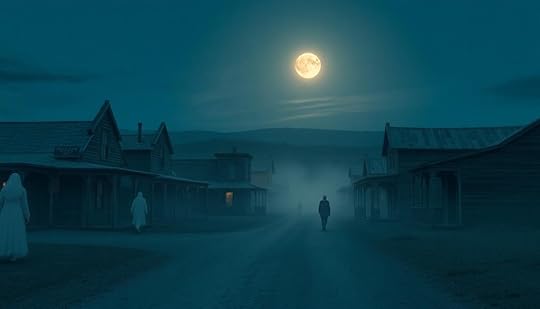
When you explore Bodie, you'll hear tales of cursed artifacts that bring misfortune to those who take them.
Visitors often report strange sounds and ghostly encounters, like the spirit of a child-hating maid or playful apparitions in the cemetery.
These haunting stories add an eerie charm to this once-thriving gold mining town.
Cursed Artifacts and MisfortuneCursed artifacts from Bodie have a notorious reputation, enchanting visitors with tales of misfortune and bad luck for those who dare take them. The legend of the curse has become an integral part of Bodie's folklore, drawing thrill-seekers to this ghost town, but often leaving them with more than they bargained for.
Many who pilfer these artifacts report a string of unfortunate events, prompting them to return their stolen treasures. Park rangers frequently receive letters and packages from those seeking to lift the supposed curse. The atmosphere of reverence surrounding Bodie's historical significance only grows stronger with these stories.
Here are some common experiences associated with the cursed artifacts:
Sudden financial troublesUnexplained health issuesRelationship difficultiesAccidents or misfortune during travelsStrange noises or sightings at homeThese tales of misfortune serve as a powerful deterrent against theft, ensuring that Bodie's eerie charm remains intact. As you explore this ghost town, remember that what you take could come with a heavy price.
Haunting Stories and SpiritsBodie is alive with ghostly tales that captivate both the curious and the brave. As you wander through this iconic ghost town, you'll hear haunting stories that echo through time. One legend tells of a child-hating maid who still lingers in her historic home, leaving visitors chilled by her presence.
You might also find yourself in the cemetery, where the Angel of Bodie, a playful child spirit, interacts with those exploring the grounds, especially children.
Park rangers recount eerie sounds of laughter and parties that seem to emanate from abandoned buildings, adding a layer of mystery to your visit. The Gregory House adds to the spectral atmosphere, where an old woman is often spotted knitting and rocking in her former home.
The whispers of Bodie's past create an enchanting yet eerie experience, making it clear that this ghost town is more than just a relic of history.
Many who dare to take artifacts from Bodie have returned them in hopes of lifting a curse, a confirmation of the town's potent supernatural reputation. Each step you take in Bodie might just lead you closer to its lingering spirits.
Tourism and Visitor Experience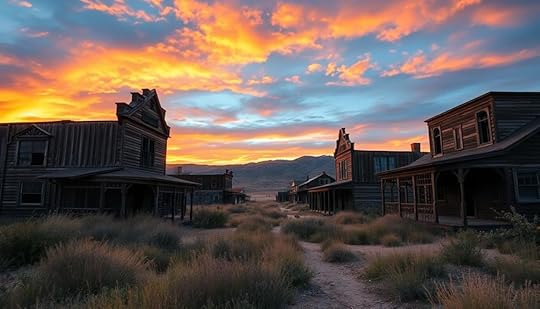
Exploring the eerie charm of Bodie State Historic Park offers a unique glimpse into California's rich mining past and its architectural significance. This ghost town, with its preserved structures and haunting stories, draws tourists keen to discover its historical significance that echoes the narratives of other preserved sites, such as the historical farmhouses across regions.
For just $8 for adults and $5 for children, you can wander through approximately 100 structures that showcase the town's architecture and mining culture.
When visiting, keep these tips in mind:
Accessibility: The park is open year-round, but unpaved roads may become impassable after October due to snow.Pet Policy: Dogs are welcome on leashes, but please respect closed areas for preservation.Exploration: Take your time to absorb the 19th-century atmosphere and learn about the town's history.Photography: Capture the essence of "arrested decay" with your camera, but remember to tread lightly.Visitor Center: Stop by the Bodie Museum for additional information and insights into the mining era.With its blend of history and mystery, Bodie State Historic Park stands out among California State Parks, making it a must-visit for tourism enthusiasts.
The Curse of Bodie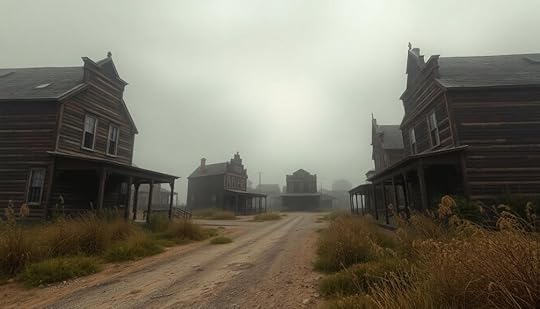
Whispers of superstition surround the ghost town, drawing visitors into the intriguing lore of the "Curse of Bodie."
Legend has it that anyone who takes an artifact from this historic site will face a streak of bad luck or misfortune. This curse has become a significant part of Bodie's haunted reputation, as countless tourists have reported eerie experiences.
Park rangers often receive letters and returned items from those who believe they've been cursed after taking something from Bodie. These accounts reveal a deep-seated fear of the consequences tied to the artifacts left behind.
Many visitors claim to hear strange noises or feel an unsettling presence after removing items, further fueling the narrative of the curse.
While some skeptics dismiss the curse as mere folklore, it undeniably deters theft and reinforces the ghost town's mystique. The fear of misfortune keeps many hands off the remnants of a bygone era, allowing Bodie's history to remain intact.
If you plan a visit, remember that the spirits of Bodie are said to protect their treasures—so think twice before taking anything, lest you fall victim to the infamous curse.
Frequently Asked QuestionsWhat Is the Bodie Curse?The Bodie Curse suggests that taking artifacts from the ghost town brings bad luck. Many visitors return stolen items, believing it'll lift the curse, while others share eerie experiences, adding to the town's haunted reputation.
What Is the Story Behind Bodie Ghost Town?Imagine a vibrant heart, pulsing with gold and dreams. You wander through Bodie's empty streets, feeling the echoes of laughter and despair. Once alive with ambition, it now whispers tales of fortune and loss, frozen in time.
What Happened to the Town of Bodie?Bodie experienced a boom with gold discovery, but as mining declined, residents left for new opportunities. By the 1940s, it became largely abandoned, leaving behind a ghost town preserved for its historical significance.
Does Anyone Still Live in Bodie, California?No, no one lives in Bodie, California. It's been abandoned since the 1940s, and you'll find only preserved structures. When you visit, you'll experience a glimpse of its once-vibrant mining history.
ConclusionBodie's haunting beauty and rich history offer a glimpse into the past, inviting you to explore its ghostly streets and stories. As you wander through this frozen-in-time town, you can't help but wonder: what secrets lie beneath the weathered facades? From its mining boom to its eerie legends, Bodie captivates the imagination and reminds us of the fleeting nature of prosperity. So, why not visit and feel the spirits of Bodie for yourself?



